Last summer (2016) amidst Suunto announcing the Spartan series, they made note of a planned optical heart rate enabled version that would be released down the road. Fast forward to this past January (2017) and at CES they did just that – the ‘Wrist HR’ lineup, often just abbreviated as WHR. This lineup took the existing Suunto Spartan Sport and added a Valencell optical heart rate sensor into it, giving you heart rate data directly from your wrist during both workouts and any other time you wanted it.
They started shipping the units back on March 31st – in conjunction with another major firmware update for the Spartan series.
Now as you may remember, I reviewed the Spartan series last fall when it first came out. By Suunto’s own admission, that release was a wee bit premature. Simply put: The product wasn’t ready. But a lot has changed since then. They’ve added back in tons of features previously found on the prior Suunto watch lineups, plus some new ones. Accuracy has improved and generally speaking people are boatloads happier with it than they were nine months ago.
So this review will really be focused on two core things:
A) Is the optical HR sensor within the Wrist HR accurate? And how does it work?
B) Some of the changes that have occurred since my previous review of the Spartan series
I note that because my goal this spring has been to minimize writing ‘churn’. Meaning, re-writing the same stuff I wrote before. Be it this Suunto Wrist HR review, or the Garmin FR935 review – I’m trying to get better at covering what’s new/unique/different about the unit in comparison to before. So while I’ve used it for many basics like smartphone notifications, I’m not going to dive as-deeply into those areas since they work just fine. Instead, I want to dive deeper into the things that are more unique about the product.
With that – let’s get cooking. Oh, and as usual, I’ll be sending back this loaner unit to Suunto once I wrap up this review. From there I’ll go out and get a unit through normal retail channels. Onwards we go!
Unboxing:
First up is getting the unit out of the box. If you’re a Suunto regular you’ll find the box setup here virtually identical to most of their past watches, including the rest of the Spartan series.
Once you crack it open you’ll find the watch sitting there looking up at you. Inside we’ve got a small smattering of parts:
This includes the paper manual stuffs that you’ll probably never read (especially after this post). Then we’ve got the charging cable. This is the same charging cable used on the rest of the Spartan series, though it is different from that used on the previous Ambit series. I definitely prefer this one, as the magnetic clip system works better than the side-clip thingy from the past.
And finally, the watch itself:
It’s pretty simple – there’s not much else within the box to talk about. That said, I did make an entire unboxing video that includes not just the unboxing but also a walk-through size comparison against numerous other watch models. You can find that goodness below:

For those that prefer pictures and text, you’ll also find the size comparisons below.
Model and Size Comparison:
So how does it stack up in terms of size? Ask and you shall receive! Here’s a lineup of watches to ponder. Left to right: Forerunner 935, Fenix 5, Fenix 5X, Suunto Spartan Sport Wrist HR, and Suunto Ambit 3 Peak.
And then here’s the same, looking at the stack height (depth) on them:
As for weights? Ask and you shall receive:
And again, remember in the video above – starting around the 4:11 marker – you can see a boatload of other watches and much more commentary on all the nuances of size, including the older Suunto units too.
The Basics:
Ok, I know I said I wasn’t going to cover all the basic stuff, but I’ve gotta at least cover some basics. Don’t worry, we’re going to keep this brisk and then move onto other areas. Also, you’ll note much of what I highlight here is more unique to updates since last fall.
So like the rest of the Suunto Spartan series the unit has all of the smartphone connected features you’d come to expect from most smart-watches these days. That means you’ll get smartphone notifications on your watch (from any app, not just calls/texts), which can be dismissed from the watch itself once read.
This connection uses Bluetooth Smart and is maintained anytime your phone is nearby the watch. It does not require the Suunto Movescount mobile app on your phone to be opened up for generic smartphone notifications. Whereas the Movescount mobile app is used for syncing workouts and settings.
Within this app, you can configure basic profile settings, as well as which sports are sync’d to the watch itself. You cannot, however, configure specific data screens/fields/pages for your watch, as that must be done using the full Suunto website (like past Suunto watches, it can’t be done on the watch either).
Generally speaking, most workouts will sync in less than a minute, though that varies a bit based on the length of the workout as well as how many sensors you’ve connected and whether or not GPS is involved.
When it comes to the watch itself, the display is a touchscreen, enabling you to swipe up/down through the menus. You can also use the buttons to do so as well, which can be a good idea in tougher conditions like snow or rain where touch can be a bit trickier.
While Suunto has made good gains in terms of improving the speed of the user interface, I’d argue it still feels sluggish at times. Not so much in sport modes (it’s fine there), but just navigating through the generic screens like the settings. It’s hardly a deal-killer, but I know some will ask about that.
The main screen can be customized with some different watch faces if you like. You can’t create your own watch faces, but they’ve got a few to choose from. These can be selected on the watch itself.
If you scroll down from the main screen you get into the activity as well as training and load screens. First up is the activity screen, which shows your current steps against the goal for the day. If you tap the screen it shows you calories. And then you can also swipe left to see daily steps per day.
And these days, this activity tracking properly shows up on the smartphone app and web as well – something it didn’t do in the past! Note however that at this time Suunto does not track any sleep metrics (at all), nor do they track distance walked (at all). So compared to most daily activity trackers, they’re a bit far behind.
If you swipe right, you’ll get to your instantaneous/continuous heart rate graphs. But I’ll come back to that in just a second – hang tight!
Scrolling down, you get to your recent training load pages. The first is a bar graph showing sports and totals per sports. Note this does reset after each firmware update, though it sounds like the next firmware update in June will rectify that issue.
If you swipe to the left you’ll see more details of the latest sport type you’ve completed, cycling in my case:
Meanwhile, if you swipe right, you’ll see upcoming training as per Movescount. These aren’t structured trainings per se, but rather just reminders to do workouts. Think of them like the digital equivalent of a sticky note telling you to do a 45-minute run. It’s not going to give you instructions during the run but is just a casual way of reminding you to run in the first place. This is different from what Polar and Garmin have, which actually executes the structured workouts during the run, with each step as you run.
Finally, scrolling down one more time you’ll see your current recovery time, which is based on heart rate inclusive workouts and is cumulative across workouts.
But let’s back up a second to the continuous heart rate piece I briefly mentioned a moment ago. Within the Spartan Wrist HR, you get the ability to check your heart rate at any time by navigating through the menu to the activity page, and then swiping to the right. You’ll see the below page which will immediately start monitoring your HR and do so with a trailing 10-minute graph.
Note that it will only show your heart rate while looking at that data page, not otherwise. However, you can tap that page and then see the last 12 hours of heart rate data. When you do that the unit will be polling every 10 minutes to get a heart rate reading. It’ll stay lit up to 60 seconds each time to get a lock on your heart rate.
When in this mode it does seem to pretty significantly reduce the battery life of the watch – I can’t really get anywhere near a full week once I include a daily workout of an hour in there (with GPS). On the screen above you’ll also see your average calorie burn rate over the last 12 hours (whereas on the 10-minute screen you see the hourly burn rate based on that 10 minutes). It’ll also show you the lowest HR achieved during that 12 hours, which is most often considered your resting heart rate (RHR).
Note that you do have to enable this menu option, which is under the Settings > Activity > Daily HR.
Also, note that at present none of the continuous heart rate data is saved to Movescount or visible on the Movescount app or site. It’s all fart in the wind stuff. Once beyond the 12 hours, the data is gone. That said, Suunto is looking into getting this data saved later this year, but doesn’t have a super-specific timeline on it yet.
The value in this data is more for resting heart rate trending. To understand that, see this separate detailed post I put together last year.
Finally, to wrap things up, I want to at least mention navigation. The unit has added new navigation functions since last fall, which make it more competitive. And then coming next month, it gets even more (Track back to start).
However, one of the things folks have been asking for is an update in general for my original Spartan Ultra/Sport review. So I’m writing a new navigation section covering all Spartan devices (they’re all identical), and I’ll be pasting it into both reviews. That’ll happen over the next week at the latest.
Still, I’ve gotta say – one of my favorite things ever on the Suunto platform is really the heat maps. It just makes finding spots to train so much easier. Which in turn can be used for creating routes on Movescount to then send to your unit. In particular, my favorite part is that I can filter by sport. This is excellent for example when trying to find swimming routes. Or to filter out people winter skiing if you’re trying to find summer hiking trails on a ski resort.
But again, more on that shortly! With that, let’s dive into sport usage.
Sport Usage:
To start with sport usage, it’s probably best to start with actually customizing your watch to display the data and fields you want. This is an important area that wasn’t previously available last fall when the Spartan series first launched, but has since become an option. Note that virtually everything I talk about in this section is applicable to all Suunto Spartan series watches (unless otherwise noted).
To configure your settings, you’ll go onto Movescount and then select ‘Watches’ from the dropdown menu in the upper right corner, where you can select your specific paired watch. If you don’t have 28 Suunto watches paired to your account like I do, you’ll likely see fewer watches listed. Like 1 or something.
Here you’ll see all the settings for your watch. Each settings area is expandable to dig into more settings, the biggest of which is ‘Sport modes’.
Within this, I can add any of the gazillion different sport modes that Suunto offers to my watch (which can have up to 20 on the quick access list). And each sport mode umbrella group (like ‘Cycling’) can have variants within it – such as cycling with power, or in a group, etc… Allowing you to tweak settings slightly for that particular purpose.
One weird oddity though is that you can’t simply customize existing sport modes. Instead, you’ve got to recreate a new sport mode anytime you want to tweak a data field or layout. Which…is somewhat annoying.
You can start off by choosing the specific data page layout you want:
Then from there you’ll select the fields within it. You can do up to 7 data fields in a page – which is quite a bit more than Garmin maxing out at 4 fields (though, there are some Connect IQ apps to get around that). Still, it’s a distinct advantage for Suunto:
As I’ve mentioned before – one of my favorites is actually the lap summary screen, which isn’t found on many other wearables out there. It lists the laps as you go through it. But I’ll show some real-life pictures of that in a moment.
Beyond the data pages, it’s here that you can customize sport-specific settings like Autolap or GPS accuracy. Some of these can also be tweaked on the device (such as GPS accuracy). While others must be done via the website.
Lastly, down below the sport profile settings are more generic options for the device as a whole. Most of these haven’t changed since last fall.
With all that out of the way, let’s head out for an activity. Running in this case, though for the most part all sports work pretty similar in terms of ‘workflow’. To begin, you’ll either swipe or button-press up to the ‘Exercise’ menu:
Then from there you’ll select your specific sport mode. You can iterate through any of the modes you’ve configured. You can also press down within a sport mode and access some settings like GPS accuracy or the interval feature.
Speaking of which, Suunto has introduced this new interval feature which is the first time we’ve seen such a capability on a Suunto watch. Previously you had to use a hodgepodge of 3rd party apps (on the Ambit series), or had no solution at all. Now though, you can access the interval menu from below the sport settings and it’s quick and easy to setup.
Once enabled you’ll select how many reps you want, as well as the duration or distance. You’ll also specify the recovery duration or distance.
With that all configured, it’s back to heading outside for a run. While outside you’ll want to ensure you have a heart rate lock (the HR icon stays lit), and GPS lock (the location icon stays lit too).
Once that’s done – you hit start and it’ll start showing you the metrics you’ve setup. You can either swipe through the data pages, or press the physical buttons to change data pages.
With Suunto’s interval mode, there is no predefined warm-up or cool-down. Rather, you’re in control of when you start the interval portion. So you’ll swipe over to the interval screen once ready, then press to begin.
Within the interval screen (which you can customize) it’ll show your current pace, distance of the interval, and time.
At the end of the predefined work portion, it’ll automatically switch to the rest portion, and then show you a summary screen that’s quite detailed, for the just-completed work portion:
This will iterate until complete, at which point you can either re-start the interval session, or just carry-on with the rest of your run. Once you’ve decided you’ve run enough, you can stop the workout using the upper right button. Upon completion, it’ll ask you how the workout felt.
From there it’ll show you the summary stats as well as lap summary stats. Now interestingly, on Movescount it’ll show you detailed stats for the interval-only portion of the workout, making it simple to filter on just those portions.
Speaking of Movescount, here’s a look at an activity on it. I generally like what I see there. Some folks prefer Movescount, and others prefer Garmin Connect. There are pros and cons to both. I mostly find it a wash for things like running.
Now, while I’ve focused on running up until this point, the reality is that from a sport mode standpoint all of the general sport pieces work basically the same across all sports. Take for example cycling – about the only difference is that you’ll select the screen labeled ‘Cycling’ instead of ‘Running’.
However, with cycling, you get into areas like sensors. The Spartan Wrist HR continues with the same trend as the Ambit3 and rest of the Spartan series which supports only Bluetooth Smart sensors (not ANT+). Still, it does support virtually all major Bluetooth Smart sensors in the cycling world. And in recent updates Suunto now supports setting important power meter configuration items like crank length as well as doing a zero offset of the power meter.
The same goes for running, which of course supports heart rate sensors (all sports do), but also even the Stryd running power meter sensor, as well as generic running footpods.
One final area of note is swimming, which is where Wrist HR does have one unique capability over the Garmin Fenix 3HR/Fenix 5/FR935 units: It supports displaying and recording your optical HR data.
While in the water the optical HR sensor will remain enabled like any other sport, allowing you to view your heart rate in real-time as well as record it. Now Suunto doesn’t make a lot of promises here, and for good reason. Measuring your HR while in the water swimming is one of the toughest things for an optical HR sensor to get right. For some people it works well, and for others…not at all. In my case, it was a mixed bag (as I’ll show in the HR accuracy section). It roughly showed the trend correctly, but didn’t get the nuances of brief higher efforts. So while it’s better than nothing, I probably wouldn’t make second by second pacing decisions from it.
Note that you can still pick up Suunto’s Smart Sense heart rate strap to record HR data more accurately in the water, which syncs up afterwards and download the data to the watch. It won’t show you live on the watch data mid-swim, but will be there for after the swim. This is also useful for sports like tennis where you may not use the watch during the sport itself, but rather keep it on the sidelines and just want to record heart rate.
With the sport overview covered, let’s dive into whether or not this optical HR sensor is actually accurate.
Heart Rate Sensor Accuracy:
The Suunto Wrist HR series includes Valencell’s optical HR sensor built into the bottom of it. This is notable because Valencell’s sensor is found in one device that I tend to consider my most trusted optical HR sensor unit – the Scosche Rhythm+. And thousands upon thousands of DCR readers have agreed – the accuracy of that unit is amazing. So when Suunto announced they were going with Valencell, that had the potential to be quite significant.
With the Valencell sensor, the Wrist HR samples and records your heart rate data every second during workouts, as other companies in the market do. However, as noted earlier, they do not record 24×7 data like some other companies do. Thus, I’m really just going to focus this section on workout HR accuracy. Mostly because I didn’t really see any issues with the spot-check HR accuracy mode when I looked at it (non-workout), it generally matched.
Before we move on to the test results, note that optical HR sensor accuracy is rather varied from individual to individual. Aspects such as skin color, hair density, and position can impact accuracy. Position and how the band is worn are *the most important* pieces. A unit with an optical HR sensor should be snug. It doesn’t need to leave marks, but you shouldn’t be able to slide a finger under the band (at least during workouts). You can wear it a tiny bit looser the rest of the day.
Ok, so in my testing, I simply use the watch throughout my normal workouts. Those workouts include a wide variety of intensities and conditions, making them great for accuracy testing. I’ve got long/steady runs, hard interval workouts on both bike and running, as well as tempo runs and rides. Not to mention skiing and hiking. Night and day, sun and snow. I’ve got it all!
For each test, I’m wearing additional devices, usually 3-4, which capture data from other sensors. Typically I’d wear a chest strap (usually the HRM-TRI or Wahoo TICKR X), as well as often another optical HR sensor made by Scosche and in some cases also a Garmin Fenix 5. Note that the numbers you see in the upper right corner are *not* the averages, but rather just the exact point my mouse is sitting over. Note all this data is analyzed using the DCR Analyzer, details here.
Now, I’m going to give you a bit of a spoiler here: The data is confusing. For the first few weeks while using Wrist HR, I got generally horrible optical HR data. So much so that I’d say it was pretty much the worst optical HR sensor I’ve ever seen. But then something odd happened: Over time it actually got better.
I had tried all manner of different things in terms of positioning/tightness, and none seemed to make any difference. Inversely, now almost two months later – changing positions and stuff doesn’t make it worse – things are pretty good these days for running (cycling is still a mixed bag).
Here, let me show you what I mean. If we go back to late March, here’s a simple and relatively easy run with three clear intervals in it:
You can see that maroon line is the Wrist HR. It misses pretty badly the first 7-8 minutes, then gets with the program until the 3rd interval, which it misses as well.
At this point I’d have considered it not great, but not the ‘worst I’ve ever seen’. But then I did another run…and it got even worse. Any change in pace/intensity hosed it up.
What about cycling you ask? Well, that’s a complete mess. Only one of these four doesn’t match (hint: It was the Suunto). Surprisingly, the FR935 actually got it right most of the time (historically a rarity for Garmin’s optical HR sensors while cycling).
Meanwhile, if I brought it in on an indoor trainer, it was a mixed bag. The first portion was a mess, but then it matched nicely the rest of the workout:
But then something weird started happening: It started getting better. Check out this next indoor trainer ride. It beautifully locked on perfectly.
Ok, maybe not every ride. Just not outside cycling it seemed. This ride two days later was a mess too (green is Spartan, others are TICKR-X and FR935 Optical):
But aside from that, I started seeing improvements in running too. Check out this interval workout that the Suunto was definitely the most correct on (even in that wonky-ass section at the beginning).
And again, this 10-miler run, even with pushing a stroller, it had no issues throughout the entire run.
But there were occasional quirks – almost always within the first 2-3 minutes, like these two runs. First in San Francisco and then in Monterey. Still, throughout the run, the units agreed nicely.
Heck, at this point I even got some largely decent cycling results out of it (vs Scosche and TICKR-X). Again, minor blip in the first couple minutes, but otherwise good through lots of shifts in intensity.
And again, no issues at this point in running either – even with intervals.
In fact, here’s an interval session from just yesterday. While I still see oddities occasionally in those first few minutes, once warmed up it’s pretty happy. Even briefly correctly outperforming both other units in that first interval.
So where does this leave me?
Well, somewhat confused. Kinda like the ROTOR 2INpower in-depth review two days ago where I saw certain quirks that neither myself or the company could explain it. In the case of Suunto and the optical HR sensor, I had extensive calls over the last 3-4 weeks with not only Suunto, but also Valencell (the maker of the sensor).
The long and the short of it is that nobody seems to have a clear idea as to why it trends that way. They noted that they had seen some similar cases where units had ‘improved’ over time, similar to what I saw. There’s no learning inside it from a software standpoint. They hypothesized that users that may not be familiar with optical HR sensors may just need a few workouts to figure out what works best for them. That’s certainly a logical explanation for others, but not exactly for me. I know rather well how to wear it – and even now many weeks later I can wear it any way I like (less restrictive), and it’s fine. Previously no matter how perfectly I wore it, it sucked.
The other idea they brought up is that perhaps the band material might be softening a bit over time, resulting in a better fit since it allows more flexibility. That’s definitely a valid idea, though I don’t have two units side by side to see how they feel now comparatively.
Note that at no point during this period was there a software update impacting the optical HR sensor. The next update for the optical HR sensor from a firmware standpoint isn’t expected till the end of 2017.
Finally – some DCR readers saw a similar pattern (based on the comments you’ve left in the comments sections of the preview post). Initial workouts were horrible, but then it unexplainably improved.
Which puts me in the category of: If I see all accuracy numbers like those over the last 4 weeks (versus those in the first 2 weeks), then I have zero issues recommending it for running, and it seems like a bit of a mixed bag on cycling (though perhaps slightly better than Garmin’s optical HR sensor on the Fenix 5/FR935). By the way, for swimming, which you can see some data in the tables, it’s slow to react for me, but it does at least get the general trends correct.
I guess my recommendation here would be from an accuracy standpoint – just ensure you’ve got a good return policy, and to give it 2-3 weeks to see if it starts getting better if you run into issues.
Finally – here’s a table of all of the data/workout files, including many files I didn’t highlight within this review. You can dive into them using the DCR Analyzer, as well as download the original files.
Suunto Wrist HR Data
| Date | Workout Type | Data Type | Units Used | Comparison Link |
|---|---|---|---|---|
| May 11th* | Running | GPS/HR | Spartan Wrist HR, Fenix 5 Optical HR, Fenix3 with TICKR X HR Strap | Analyze |
| May 10th | Openwater Swim | GPS/HR | Spartan Wrist HR, Fenix 5, Fenix3 (Reference Swim Buoy) | Analyze |
| May 10th | Cycling | GPS/HR | Spartan Wrist HR, Fenix 5, Edge 820 with TICKRX HR Strap | Analyze |
| May 4th | Cycling | GPS/HR | Spartan Wrist HR, Edge 820 with TICKRX HR Strap, Stages Dash with TICKR X HR Strap | Analyze |
| May 2nd | Running | GPS/HR | Spartan Wrist HR, Fenix 5 Optical HR | Analyze |
| APR 30th* | Running | GPS/HR | Spartan Wrist HR, Fitbit Alta HR (Optical), Fenix 5 with TICKR X HR Strap, Fenix 3 with Scosche | Analyze |
| APR 28th* | Running | GPS/HR | Spartan Wrist HR, Fitbit Alta HR (Optical), Fenix 5 with TICKR X HR Strap, Fenix 3 with Scosche | Analyze |
| APR 27th | Cycling | GPS/HR | Spartan Wrist HR, Edge 820 with TICKRX HR Strap | Analyze |
| APR 24th* | Cycling | GPS/HR | Spartan Wrist HR, Fenix 3 with Scosche, Edge 820 with TICKR X HR Strap | Analyze |
| APR 15th | Running | GPS/HR | Spartan Wrist HR, FR935 Optical HR | Analyze |
| APR 13th | Running | GPS/HR | Spartan Wrist HR, FR935 Optical HR | Analyze |
| APR 11th* | Cycling Trainer | HR | Spartan Wrist HR, Vivosmart 3 Optical HR, FR935 with TICKR X HR Strap, Edge 520, Edge 820 with Scosche | Analyze |
| APR 9th* | Cycling | GPS/HR | Spartan Wrist HR, Vivosmart 3 Optical HR, FR935 with Scosche HR, Edge 520, Xplova X5, Edge 820 with TICKR X HR Strap | Analyze |
| APR 8th* | Running | GPS/HR | Spartan Wrist HR, Vivosmart 3 Optical HR, FR935 with Scosche HR, Fenix3 with HRM-RUN HR Strap | Analyze |
| APR 6th* | Cycling | GPS/HR | Spartan Wrist HR, FR935 Optical HR, Wahoo BOLT, Edge 520, Xplova X5, Edge 820 with TICKR X HR Strap | Analyze |
| APR 5th* | Running | GPS/HR | Spartan Wrist HR, Polar M430 Optical HR, Fenix 3 with Scosche HR, FR935 with TICKR X HR Strap | Analyze |
| Apr 2nd | Cycling | GPS/HR | Spartan Wrist HR, FR935 Optical HR, Edge 820 with Scosche, Edge 520, Xplova X5 GPS, Wahoo BOLT with TICKRX HR | Analyze |
| Mar 30th | Cycling Trainer | HR | Spartan Wrist HR, FR935 Optical HR, Edge 1000 with TICKR X HR Strap, Edge 820 with Scosche HR | Analyze |
| Mar 26th* | Cycling | GPS/HR | Spartan Wrist HR, FR935 Optical HR, FR735XT with Scosche, Edge 820 with TICKR X HR Strap | Analyze |
| Mar 25th* | Running | GPS/HR | Spartan Wrist HR, FR935 Optical HR, FR735XT with Scosche, Fenix3 with HRM-RUN Strap | Analyze |
| May 24th* | Cycling Trainer | HR | Spartan Wrist HR, FR935 Optical HR, Fenix3 with HRM-RUN, Edge 820 with Scosche | Analyze |
| Mar 22nd* | Running | GPS/HR | Spartan Wrist HR, FR735XT with Scosche, Fenix3 with HRM-RUN Strap | Analyze |
| Mar 21st | Running | GPS/HR | Spartan Wrist HR, Fenix 5 Optical HR, Fenix3 with HRM-RUN Strap | Analyze |
| Mar 20th* | Running | GPS/HR | Spartan Wrist HR, Fenix 5 Optical HR, FR935 with HRM-RUN Strap | Analyze |
| Mar 19th* | Cycling | GPS/HR | Spartan Wrist HR, Fenix 5 Optical HR, Edge 1000 with TICKR X HR Strap | Analyze |
Note that the ones with asterisks on them are generally the ones I included in this review up above.
(Note: All of the charts in these accuracy sections were created using the DCR Analyzer tool. It allows you to compare power meters/trainers, heart rate, cadence, speed/pace, GPS tracks and plenty more. You can use it as well, more details here.)
GPS Accuracy:
There’s likely no topic that stirs as much discussion and passion as GPS accuracy. A watch could fall apart and give you dire electrical shocks while doing so, but if it shows you on the wrong side of the road? Oh hell no, bring on the fury of the internet!
GPS accuracy can be looked at in a number of different ways, but I prefer to look at it using a number of devices in real-world scenarios across a vast number of activities. I use 2-6 other devices at once, trying to get a clear picture of how a given set of devices handles conditions on a certain day. Conditions include everything from tree/building cover to weather.
Over the years I’ve continued to tweak my GPS testing methodology. For example, I try to not place two units next to each other on my wrists, as that can impact signal. If I do so, I’ll put a thin fabric spacer of about 1”/3cm between them (I didn’t do that on any of my Suunto Spartan Wrist HR runs). But often I’ll simply carry other units by the straps, or attach them to my shoulder straps of a CamelBak. Plus, wearing multiple watches on the same wrist is well known to impact optical HR accuracy too.
Next, as noted, I use just my daily training routes. Using a single route over and over again isn’t really indicative of real-world conditions, it’s just indicative of one trail. The workouts you see here are just my normal daily workouts.
These have included the following condition types:
Dryer desert terrain, cliff-laden mountains, the highest peaks in the Alps, tons of city running/cycling, light forests/suburbia, coastal roads, rivers
First, let’s just start off with a run. Note all this data is analyzed using the DCR Analyzer, a tool you can use as well. Details here.
This interval run was actually yesterday, and started off elsewhere in town. Though there’s not much interesting there as that’s just running along the river and GPS accuracy was fine there. What’s more interesting to look at is the park I did numerous loops in, as that allows us to see very easily how it handles on the same sections. The majority of this run within the park is under large tree cover.
What you see is that it’s generally pretty good. The straightaways are straight, and the turns and corners are exactly where I went. Good stuff.
Let’s look at a shorter bike ride out of the city to go swimming, to see if we see any cutting of corners at higher speeds. Here’s the overview.
And let’s dive in on the crossing of the bridge. In one direction I was on the road. Whereas in another direction I was actually under the metro line (subway) that runs there on a bike path, which meant massive chunks of concrete obscuring the GPS view. That said, it did very well both directions. You see a tiny bit of offset GPS track to the left on the main road coming up to the bridge from the Suunto unit, but we’re only talking a few meters out of alignment.
Let’s look at another run, this a more difficult (GPS-wise) city run in San Diego. I ran alongside plenty of large buildings (including a stadium), but also did some running along the waterfront too.
Let’s dive into the tall building section to see how it held. Just to get a feel for the area, let me show you the aerial image first:
Now since that’s kinda hard to make sense of, let’s zip back to the map. Here you can see that both the Fenix 5 and Suunto unit struggled in the heaviest building area near the stadium. They were both plotting points inside some buildings, though not horribly off. I’ve seen much worse in downtown locations than this. So it wasn’t ideal, but it’s not horrible. Both units resumed proper tracking once leaving the downtown core.
Finally, one more run to throw in there – this one up in Finland. You can see at a high level that everything looks pretty good:
All the units track very closely to one another on this. If I look closely in one bridge section, I see that on one side of the bridge the Suunto unit shorts the trail up to the bridge, whereas on the other side the Garmin unit slightly shorts it. I guess they were considering it equal then or something. I see on the left side of the bank, the Suunto unit does seem incorrectly offset from the two Garmin units which appear more on the trail. But I think we’re only talking a couple meters difference here. So not something I’d fret about.
Overall – I’m seeing good stuff with the Spartan Wrist HR when it comes to GPS accuracy. Note that due to weather I was only able to get a very short 300m swim in (two days ago), and that was cut short when I was pulled over by the police (mid-swim). So…you’ll have to wait for more swim data over the coming weeks as it gets warmer out here. I included that data nonetheless within the files, but the GPS tracks from both wrist units were pretty much dismal. Not sure what to make of that.
Anyway – at this point I see very little (if any) differences in how the Suunto Wrist HR performs in comparison to the Garmin Fenix 5 or FR935. They’re all pretty darn similar. They are general quite good, but like any GPS unit can have their quirks (as demonstrated).
Note that again, you can download any of the GPS files from all of my workouts with the unit. I think that’s really important that you can look at the actual files and not have the data obscured through statistics that may not tell the actual story. I want you to see what the tracks look like and the circumstances related to each one. Also, note that for *ALL* of my data I select to record at the highest fidelity possible (1-second/best recording rates, and generally GLONASS enabled). Again, if you don’t enable 1-second/best recording rates when comparing GPS tracks, your data is useless from a comparative standpoint, your data isn’t worth any more than a half-eaten Dorito chip sitting on the side of the road. In any case, all my data:
Suunto Wrist HR Data
| Date | Workout Type | Data Type | Units Used | Comparison Link |
|---|---|---|---|---|
| May 11th* | Running | GPS/HR | Spartan Wrist HR, Fenix 5 Optical HR, Fenix3 with TICKR X HR Strap | Analyze |
| May 10th | Openwater Swim | GPS/HR | Spartan Wrist HR, Fenix 5, Fenix3 (Reference Swim Buoy) | Analyze |
| May 10th | Cycling | GPS/HR | Spartan Wrist HR, Fenix 5, Edge 820 with TICKRX HR Strap | Analyze |
| May 4th | Cycling | GPS/HR | Spartan Wrist HR, Edge 820 with TICKRX HR Strap, Stages Dash with TICKR X HR Strap | Analyze |
| May 2nd | Running | GPS/HR | Spartan Wrist HR, Fenix 5 Optical HR | Analyze |
| APR 30th* | Running | GPS/HR | Spartan Wrist HR, Fitbit Alta HR (Optical), Fenix 5 with TICKR X HR Strap, Fenix 3 with Scosche | Analyze |
| APR 28th* | Running | GPS/HR | Spartan Wrist HR, Fitbit Alta HR (Optical), Fenix 5 with TICKR X HR Strap, Fenix 3 with Scosche | Analyze |
| APR 27th | Cycling | GPS/HR | Spartan Wrist HR, Edge 820 with TICKRX HR Strap | Analyze |
| APR 24th* | Cycling | GPS/HR | Spartan Wrist HR, Fenix 3 with Scosche, Edge 820 with TICKR X HR Strap | Analyze |
| APR 15th | Running | GPS/HR | Spartan Wrist HR, FR935 Optical HR | Analyze |
| APR 13th | Running | GPS/HR | Spartan Wrist HR, FR935 Optical HR | Analyze |
| APR 11th* | Cycling Trainer | HR | Spartan Wrist HR, Vivosmart 3 Optical HR, FR935 with TICKR X HR Strap, Edge 520, Edge 820 with Scosche | Analyze |
| APR 9th* | Cycling | GPS/HR | Spartan Wrist HR, Vivosmart 3 Optical HR, FR935 with Scosche HR, Edge 520, Xplova X5, Edge 820 with TICKR X HR Strap | Analyze |
| APR 8th* | Running | GPS/HR | Spartan Wrist HR, Vivosmart 3 Optical HR, FR935 with Scosche HR, Fenix3 with HRM-RUN HR Strap | Analyze |
| APR 6th* | Cycling | GPS/HR | Spartan Wrist HR, FR935 Optical HR, Wahoo BOLT, Edge 520, Xplova X5, Edge 820 with TICKR X HR Strap | Analyze |
| APR 5th* | Running | GPS/HR | Spartan Wrist HR, Polar M430 Optical HR, Fenix 3 with Scosche HR, FR935 with TICKR X HR Strap | Analyze |
| Apr 2nd | Cycling | GPS/HR | Spartan Wrist HR, FR935 Optical HR, Edge 820 with Scosche, Edge 520, Xplova X5 GPS, Wahoo BOLT with TICKRX HR | Analyze |
| Mar 30th | Cycling Trainer | HR | Spartan Wrist HR, FR935 Optical HR, Edge 1000 with TICKR X HR Strap, Edge 820 with Scosche HR | Analyze |
| Mar 26th* | Cycling | GPS/HR | Spartan Wrist HR, FR935 Optical HR, FR735XT with Scosche, Edge 820 with TICKR X HR Strap | Analyze |
| Mar 25th* | Running | GPS/HR | Spartan Wrist HR, FR935 Optical HR, FR735XT with Scosche, Fenix3 with HRM-RUN Strap | Analyze |
| May 24th* | Cycling Trainer | HR | Spartan Wrist HR, FR935 Optical HR, Fenix3 with HRM-RUN, Edge 820 with Scosche | Analyze |
| Mar 22nd* | Running | GPS/HR | Spartan Wrist HR, FR735XT with Scosche, Fenix3 with HRM-RUN Strap | Analyze |
| Mar 21st | Running | GPS/HR | Spartan Wrist HR, Fenix 5 Optical HR, Fenix3 with HRM-RUN Strap | Analyze |
| Mar 20th* | Running | GPS/HR | Spartan Wrist HR, Fenix 5 Optical HR, FR935 with HRM-RUN Strap | Analyze |
| Mar 19th* | Cycling | GPS/HR | Spartan Wrist HR, Fenix 5 Optical HR, Edge 1000 with TICKR X HR Strap | Analyze |
Note that I didn’t spend much time in this review evaluating the elevation accuracy, in large part because the Suunto Spartan Sport Wrist HR unit doesn’t include a barometric altimeter. Still, the elevation accuracy is generally better than other GPS-based altimeter units I’ve seen. In fact, you can look at any activity within the table above and compare the elevation graphs as you see fit. You’ll find it tracks quite closely to other barometric altimeter units I have on-hand.
Bugs & Quirks:
I often include a section in my review about specific bugs and quirks seen in the product. From a software development standpoint, there’s often a fine line between a bug that needs fixing – and what the software industry calls ‘by design’. Meaning it’s not technically a bug, but rather something that’s designed that way (however sucky that might be). In my case, I’m going to call those ‘quirks’.
Note that I’m specifically looking at issues *I’ve encountered* during run/bike/swim/ski/hike/daily use/etc… This isn’t designed to be the end-all-be-all of bugs that may exist in the product.
With that, here’s where I stand:
Bug – Optical HR sensor accuracy: As noted extensively in the section dedicated to it above, I just see variable reasons that I can’t really explain. Other DCR readers seem to be a mixed bag as well when it comes to accuracy. Why it’s gotten better over time is a bit of a mystery to me (and Suunto).
Bug – Phone App Sync issues: The phone app often fails to sync workouts or settings. So often that I rarely even bother to try using it these days. It doesn’t seem to impact smartphone notifications though, which continue to work just fine for me.
Bug – Exporting files from Movescount: Movescount does funky stuff with .FIT exports, which result in extraneous data points being added, primarily to HR data. It doesn’t properly follow the spec. This makes it a bit of a mess in certain services. Suunto is aware of this and is working to address it.
Quirk – Data page customization: You can’t customize data pages without adding a new sport mode. Once you’ve selected the data fields for your given sport, you can’t just tweak them. Instead, you have to start all over again with that sport mode. Kinda annoying.
Quirk – Battery life: While it’s spec’d at 8 hours of GPS time, I question if I’m getting that. I admit that turning on the continuous HR piece does certainly negatively impact that further, I’ve had numerous cases where the battery ran out mid-workout just a day or two after I last fully charged it. And I certainly wasn’t doing 4-6 hour workouts those days either. I suspect that Suunto is probably hitting their numbers here, but that I’m just not used to having an endurance sport watch with this little battery life in it.
Now, I won’t list above some of the ‘annoyances’ I have that aren’t really bugs or quirks, but are definitely challenging. For example, the lack of a way to record 24×7/RHR data is a bummer. Same goes for lack of 3rd party on-watch app options – that too is a downgrade from the Ambit series and industry trends in general.
Also, for lack of anywhere else to point this out, the screen can appear dark – primarily/especially in photos. You can invert the display during workouts to a much lighter scheme, though that’s not possible throughout the rest of the user interface. In general, it’s not a big deal, but history has told me that some may find it annoying.
Product Comparison Tool:
I’ve added the Suunto Spartan Sport Wrist HR into the product comparison tool, enabling you to see how it sizes up against other watches. This includes units from Suunto as well as competitors like Garmin and Polar. For the purposes of the below, I’ve compared it against three specific units I think are the most relevant competitors: Garmin Fenix 5, Suunto Spartan Sport (non-HR), and the Garmin Forerunner 935. But if you’re looking to compare it against something else – no problem! You can use the product comparison tool to do just that and compare till your heart’s content and create your own charts!
| Function/Feature | Garmin Fenix 5 (5/5S/5X) | Garmin Forerunner 935 | Suunto Spartan Sport Wrist HR | Suunto Spartan Ultra |
|---|---|---|---|---|
| Copyright DC Rainmaker - Updated September 12th, 2021 @ 3:29 pm New Window | ||||
| Price | $599 | $499 | $499 | $699 |
| Product Announcement Date | Jan 4th, 2017 | Mar 29th, 2017 | Jan 4th, 2017 | June 7th, 2016 |
| Actual Availability/Shipping Date | March 2017 | Mar 29th, 2017 | Mar 31st, 2017 | August 2016 |
| GPS Recording Functionality | Yes | Yes | Yes | Yes |
| Data Transfer | USB/Bluetooth Smart/WiFi (Sapphire only) | USB/Bluetooth Smart/WiFi | USB & Bluetooth Smart | USB & Bluetooth Smart |
| Waterproofing | Yes - 100m | Yes - 50m | Yes - 100m | Yes - 100m |
| Battery Life (GPS) | Up to 24hrs in GPS-on, up to 75hrs in UltraTrac GPS | Up to 24hrs in GPS-on, up to 50hrs in UltraTrac GPS | Up to 50 hours | Up to 65 hours |
| Recording Interval | 1S or Smart | 1S or Smart | Variable | Variable |
| Alerts | Vibrate/Sound/Visual | Vibrate/Sound/Visual | Sound/Visual/Vibrate | Sound/Visual/Vibrate |
| Ability to download custom apps to unit/device | YEs | Yes | No | No | Music | Garmin Fenix 5 (5/5S/5X) | Garmin Forerunner 935 | Suunto Spartan Sport Wrist HR | Suunto Spartan Ultra |
| Can control phone music | Yes | YEs | No | No |
| Has offline music storage and playback | No | No | No | No |
| Streaming Services | No | No | No | Payments | Garmin Fenix 5 (5/5S/5X) | Garmin Forerunner 935 | Suunto Spartan Sport Wrist HR | Suunto Spartan Ultra |
| Contactless-NFC Payments | No | No | No | Connectivity | Garmin Fenix 5 (5/5S/5X) | Garmin Forerunner 935 | Suunto Spartan Sport Wrist HR | Suunto Spartan Ultra |
| Bluetooth Smart to Phone Uploading | Yes | YEs | Yes | Yes |
| Phone Notifications to unit (i.e. texts/calls/etc...) | Yes | Yes | Yes | Yes |
| Live Tracking (streaming location to website) | Yes | Yes | No | No |
| Group tracking | Yes | Yes | No | No |
| Emergency/SOS Message Notification (from watch to contacts) | No | No | No | No |
| Built-in cellular chip (no phone required) | No | No | No | No | Cycling | Garmin Fenix 5 (5/5S/5X) | Garmin Forerunner 935 | Suunto Spartan Sport Wrist HR | Suunto Spartan Ultra |
| Designed for cycling | Yes | Yes | Yes | Yes |
| Power Meter Capable | Yes | YEs | Yes | Yes |
| Power Meter Configuration/Calibration Options | Yes | Yes | Yes | Yes |
| Power Meter TSS/NP/IF | Yes | YEs | No | No |
| Speed/Cadence Sensor Capable | Yes | YEs | Yes | Yes |
| Strava segments live on device | Yes | Yes | No | No |
| Crash detection | No | No | No | No | Running | Garmin Fenix 5 (5/5S/5X) | Garmin Forerunner 935 | Suunto Spartan Sport Wrist HR | Suunto Spartan Ultra |
| Designed for running | Yes | Yes | Yes | Yes |
| Footpod Capable (For treadmills) | Yes | YEs | Yes | Yes |
| Running Dynamics (vertical oscillation, ground contact time, etc...) | WITH RD POD, HRM-TRI OR HRM-RUN (NOT VIA OPTICAL HR) | WITH RD POD, HRM-TRI OR HRM-RUN (NOT VIA OPTICAL HR) | No | No |
| Running Power | With extra sensor | WITH RD POD, HRM-TRI OR HRM-RUN (or 3rd party Stryd/RunScribe) | ||
| VO2Max Estimation | YEs | Yes | Yes | Yes |
| Race Predictor | Yes | Yes | No | No |
| Recovery Advisor | Yes | YEs | Yes | Yes |
| Run/Walk Mode | Yes | Yes | No | No | Swimming | Garmin Fenix 5 (5/5S/5X) | Garmin Forerunner 935 | Suunto Spartan Sport Wrist HR | Suunto Spartan Ultra |
| Designed for swimming | Yes | YEs | Yes | Yes |
| Openwater swimming mode | YEs | Yes | Yes | Yes |
| Lap/Indoor Distance Tracking | Yes | Yes | Yes | Yes |
| Record HR underwater | WITH HRM-TRI/HRM-SWIM (Not with optical HR) | WITH HRM-TRI/HRM-SWIM (Not with optical HR) | Yes | Yes |
| Openwater Metrics (Stroke/etc.) | Yes | Yes | Yes | Yes |
| Indoor Metrics (Stroke/etc.) | YEs | Yes | Yes | Yes |
| Indoor Drill Mode | Yes | Yes | No | No |
| Indoor auto-pause feature | No (it'll show rest time afterwards though) | No (it'll show rest time afterwards though) | No | No |
| Change pool size | YEs | YEs | Yes | Yes |
| Indoor Min/Max Pool Lengths | 14M/15Y TO 150Y/M | 14M/15Y TO 150Y/M | 15m/y to 1,200m/y | 15m/y to 1,200m/y |
| Ability to customize data fields | Yes | Yes | Yes | yes |
| Captures per length data - indoors | Yes | Yes | Yes | Yes |
| Indoor Alerts | Yes | Yes | No | No | Triathlon | Garmin Fenix 5 (5/5S/5X) | Garmin Forerunner 935 | Suunto Spartan Sport Wrist HR | Suunto Spartan Ultra |
| Designed for triathlon | Yes | Yes | Yes | Yes |
| Multisport mode | Yes | Yes | Yes | Yes | Workouts | Garmin Fenix 5 (5/5S/5X) | Garmin Forerunner 935 | Suunto Spartan Sport Wrist HR | Suunto Spartan Ultra |
| Create/Follow custom workouts | Yes | Yes | No | No |
| On-unit interval Feature | YEs | YEs | Yes | Yes (added Mar 31st, 2017) |
| Training Calendar Functionality | Yes | Yes | Yes | Yes | Functions | Garmin Fenix 5 (5/5S/5X) | Garmin Forerunner 935 | Suunto Spartan Sport Wrist HR | Suunto Spartan Ultra |
| Auto Start/Stop | Yes | YEs | Yes | No |
| Virtual Partner Feature | YEs | YEs | No | No |
| Virtual Racer Feature | Yes | Yes | No | No |
| Records PR's - Personal Records (diff than history) | Yes | YEs | No | No |
| Tidal Tables (Tide Information) | No | No | No | No |
| Weather Display (live data) | Yes | Yes | no | No | Navigate | Garmin Fenix 5 (5/5S/5X) | Garmin Forerunner 935 | Suunto Spartan Sport Wrist HR | Suunto Spartan Ultra |
| Follow GPS Track (Courses/Waypoints) | YEs | Yes | Yes | Yes |
| Markers/Waypoint Direction | Yes | YEs | Yes | Yes |
| Offline Maps | Yes (5X Only) | No | No | No |
| Back to start | Yes | Yes | Yes | Yes |
| Impromptu Round Trip Route Creation | Yes (5X Only) | No | No | No |
| Download courses/routes from phone to unit | Yes | Yes | Yes | Yes | Sensors | Garmin Fenix 5 (5/5S/5X) | Garmin Forerunner 935 | Suunto Spartan Sport Wrist HR | Suunto Spartan Ultra |
| Altimeter Type | Barometric | Barometric | GPS | Barometric |
| Compass Type | Magnetic | Magnetic | Magnetic | Magnetic |
| Optical Heart Rate Sensor internally | Yes | Yes | Yes | No |
| SpO2 (aka Pulse Oximetry) | No | No | No | |
| Heart Rate Strap Compatible | Yes | Yes | Yes | Yes |
| ANT+ Heart Rate Strap Capable | Yes | Yes | No | No |
| ANT+ Speed/Cadence Capable | Yes | Yes | No | No |
| ANT+ Footpod Capable | Yes | Yes | No | No |
| ANT+ Power Meter Capable | Yes | Yes | no | No |
| ANT+ Lighting Control | Yes | Yes | No | No |
| ANT+ Bike Radar Integration | Yes | Yes | No | No |
| ANT+ Trainer Control (FE-C) | No | No | No | No |
| ANT+ Remote Control | No (can control VIRB though) | No (can control VIRB though) | No | No |
| ANT+ eBike Compatibility | No | No | No | No |
| ANT+ Gear Shifting (i.e. SRAM ETAP) | Yes | YEs | No | No |
| Shimano Di2 Shifting | Yes | YEs | No | No |
| Bluetooth Smart HR Strap Capable | Yes | Yes | Yes | Yes |
| Bluetooth Smart Speed/Cadence Capable | Yes | YEs | Yes | YEs |
| Bluetooth Smart Footpod Capable | Yes | YEs | Yes (+ Stryd Running Power Meter) | Yes |
| Bluetooth Smart Power Meter Capable | YEs | YEs | Yes | Yes |
| Temp Recording (internal sensor) | Yes | YEs | Yes | Yes |
| Temp Recording (external sensor) | Yes | Yes | No | No | Software | Garmin Fenix 5 (5/5S/5X) | Garmin Forerunner 935 | Suunto Spartan Sport Wrist HR | Suunto Spartan Ultra |
| Desktop Application | Garmin Express | Garmin Express | PC/Mac | PC/Mac |
| Web Application | Garmin Connect | Garmin Connect | Suunto Movescount | Suunto Movescount |
| Phone App | iOS/Android/Windows Phone | iOS/Android/Windows Phone | iOS/Android | iOS /Android |
| Ability to Export Settings | No | No | No | No | Purchase | Garmin Fenix 5 (5/5S/5X) | Garmin Forerunner 935 | Suunto Spartan Sport Wrist HR | Suunto Spartan Ultra |
| Amazon | Link | Link | Link | Link |
| Backcountry.com | Link | |||
| Competitive Cyclist | Link | DCRainmaker | Garmin Fenix 5 (5/5S/5X) | Garmin Forerunner 935 | Suunto Spartan Sport Wrist HR | Suunto Spartan Ultra |
| Review Link | Link | Link | Link | Link |
Remember, you can use the full product comparison tool to create your own charts and compare watches as you see fit across virtually any watch I’ve written about.
Summary:
Suunto has made a lot of good improvements to the Spartan series since last year when it was first released. The number of features added is quite significant. Though, keep in mind that many of those features were getting it back to the same point the previous generation Ambit series was at. So in many ways it was more catch-up, than forge ahead of competitors.
Still, that work has paid off. For example, GPS accuracy is quite good now, and core items like being able to customize data fields are back. Their new interval functionality (the first we’ve seen on any Suunto unit), is also pretty darn good. It not only works well enough on the unit itself, but also does a good job of tying in that data to Suunto’s site on Movescount in a meaningful interval-focused way. And I continue to love their lap summary screen mid-workout. It’s a super-easy way to see how you’re trending, be it on a long run or doing some sort of structured workout.
One of the challenges Suunto has though is finding a way to differentiate themselves. With the Wrist HR, they wisely undercut Garmin’s Fenix 5/FR935 price. Simply put: Suunto can’t compete with Garmin on features. It’s not even close. And accuracy between the Fenix 5/FR935 and Spartan Wrist HR is a wash. So they’ve gotta compete in other areas, such as price. With the Wrist HR being $499, it’s a full $100 cheaper than the Fenix 5 at $599. On the flipside, the FR935 is $499 as well, and has all the same features as the Fenix 5.
Still, I think Suunto gets that. I flew up to meet with them (on my own dime) just before the release of the Wrist HR. It’s clear the company has shifted thinking into focusing almost everything on prioritizing feedback from Spartan series owners. Their survey they sent out last year is the driving force for any new software features being made. My hope is that they can continue the trend of notable firmware updates (they just announced a new one for next month, yesterday). And I think they understand that they need to transition from being in Spartan feature ‘catch-up mode’ to adding ‘innovative unseen before cool-new-shit mode’. The progress they’ve made over the last 9 months shows they are capable of righting that ship.
With that – thanks for reading!
Found this review useful? Or just wanna save a bundle of cash? Here’s how:
Hopefully you found this review useful. At the end of the day, I’m an athlete just like you looking for the most detail possible on a new purchase – so my review is written from the standpoint of how I used the device. The reviews generally take a lot of hours to put together, so it’s a fair bit of work (and labor of love). As you probably noticed by looking below, I also take time to answer all the questions posted in the comments – and there’s quite a bit of detail in there as well.I’ve partnered with Clever Training to offer all DC Rainmaker readers an exclusive 10% discount across the board on all products (except clearance items). You can pick up the Suunto Spartan Wrist HR variants below. Then receive 10% off of everything in your cart by adding code DCR10BTF at checkout. By doing so, you not only support the site (and all the work I do here) – but you also get a sweet discount. And, since this item is more than $49, you get free US shipping as well.
Suunto Spartan Wrist HR (select drop-down for variants)
Suunto Spartan Wrist HR (For European Readers, ships from Europe!)
Additionally, you can also use Amazon to purchase the Suunto Spartan and accessories (though, no discount). Or, anything else you pickup on Amazon helps support the site as well (socks, laundry detergent, cowbells). If you’re outside the US, I’ve got links to all of the major individual country Amazon stores on the sidebar towards the top.
Thanks for reading! And as always, feel free to post comments or questions in the comments section below, I’ll be happy to try and answer them!


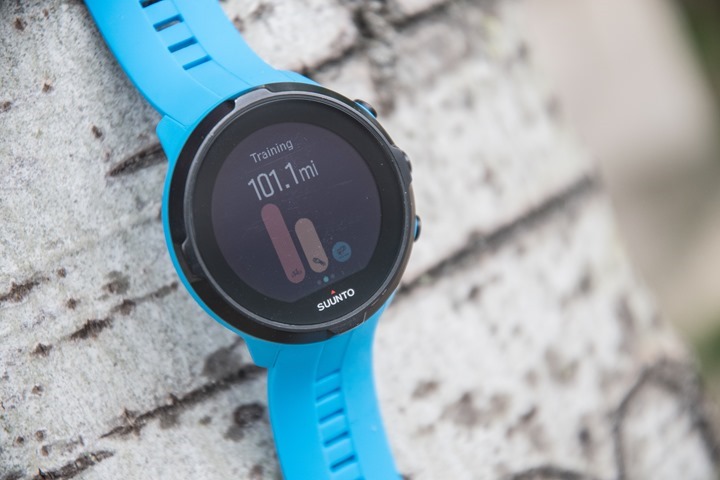
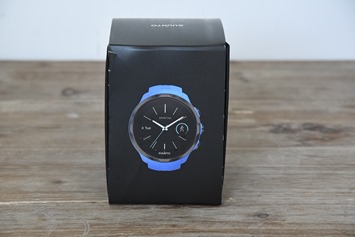
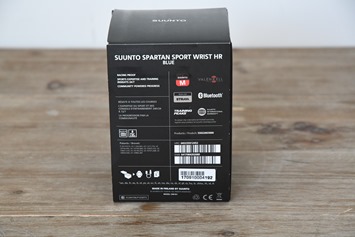
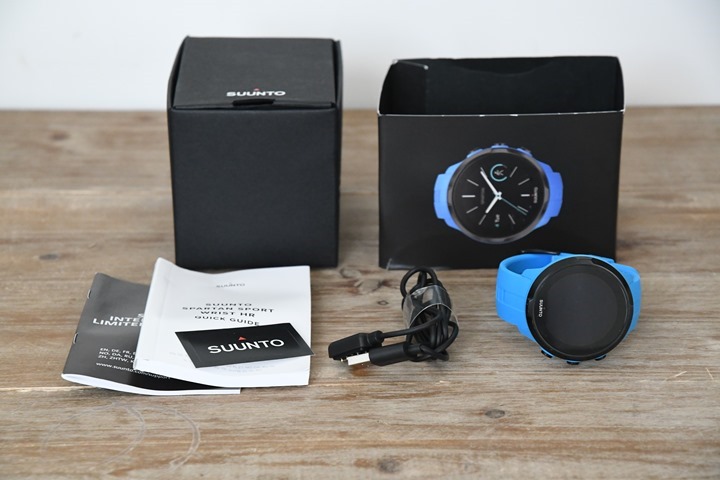
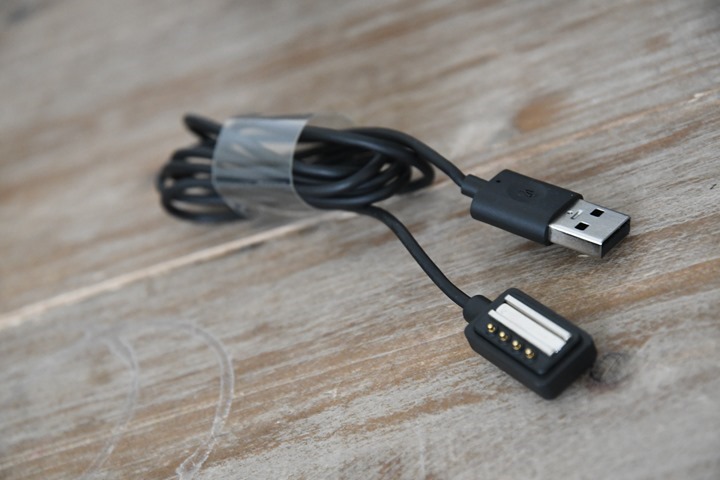
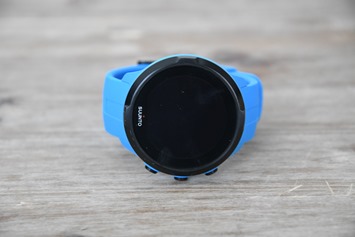
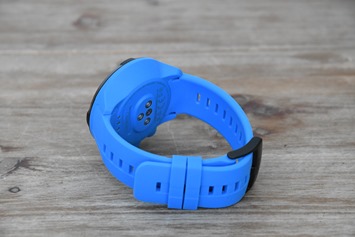
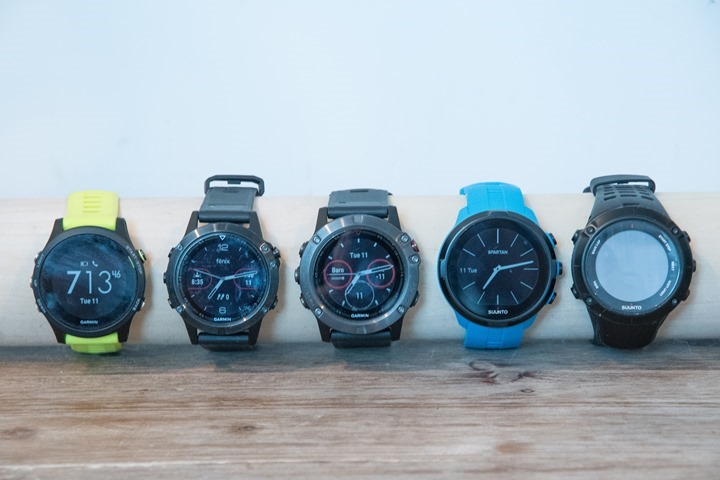
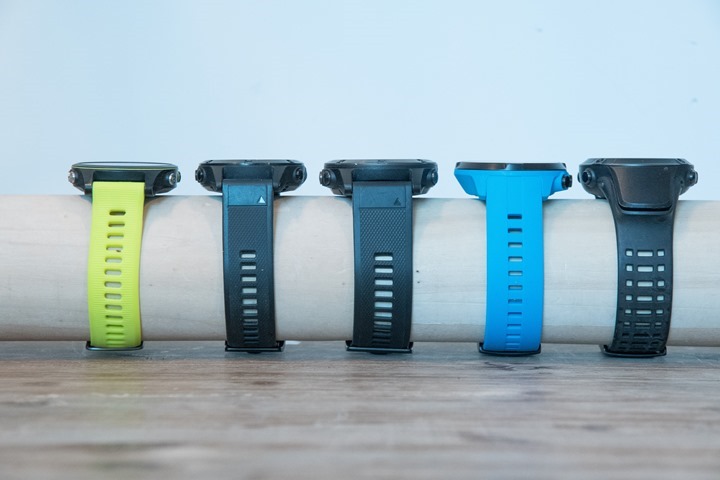
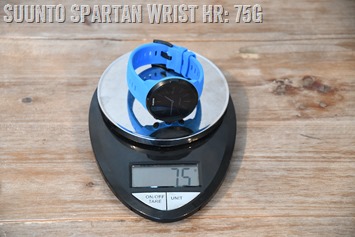
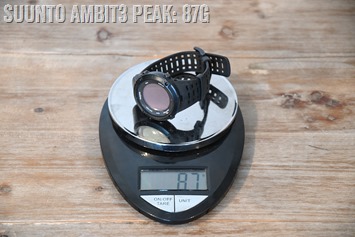
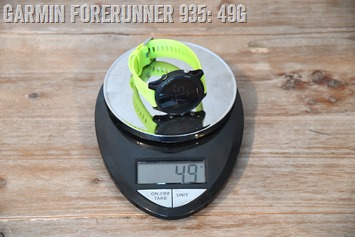
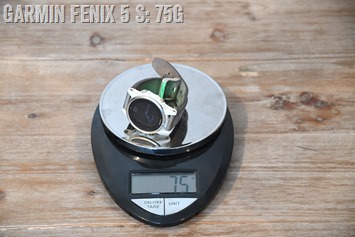
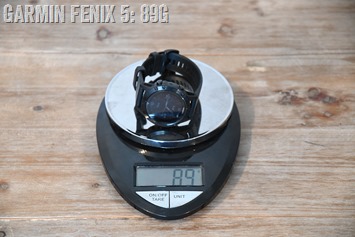
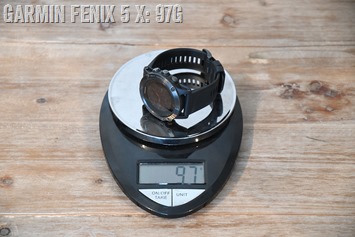
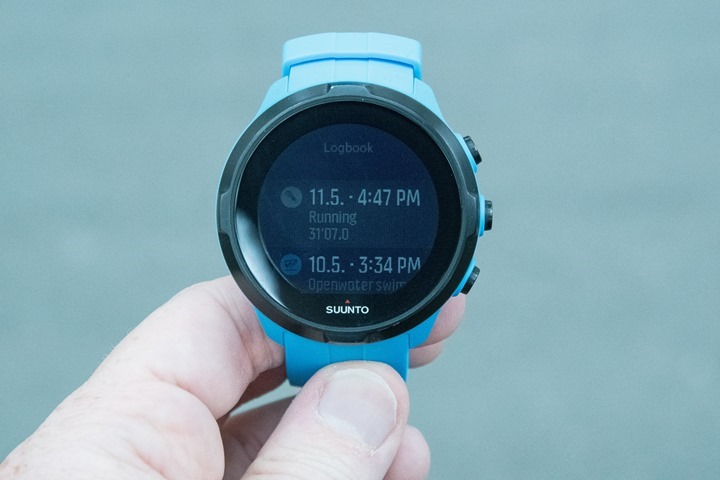
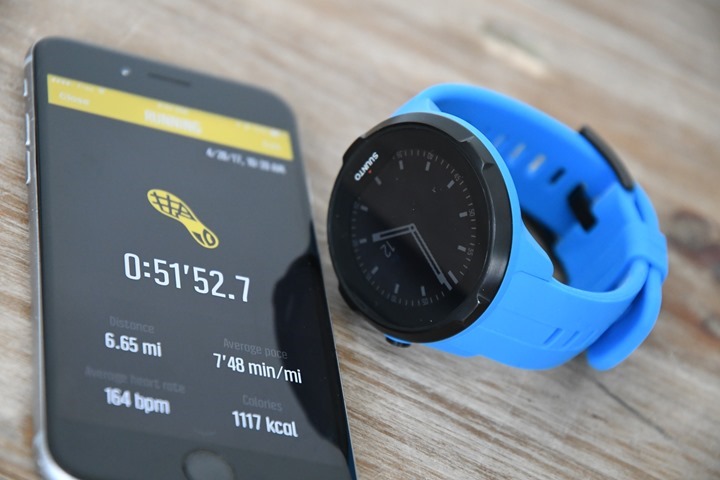
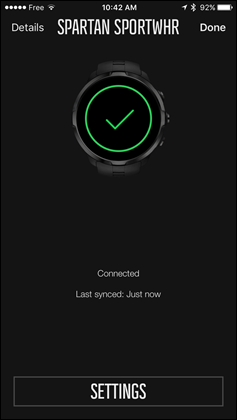
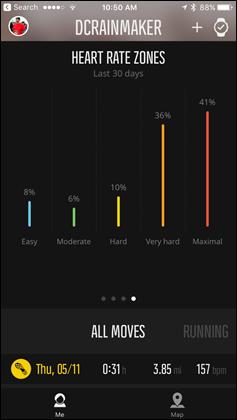
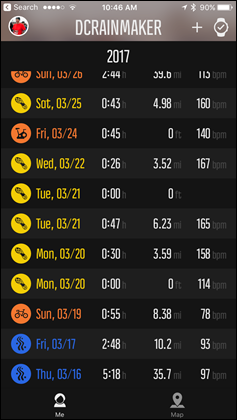

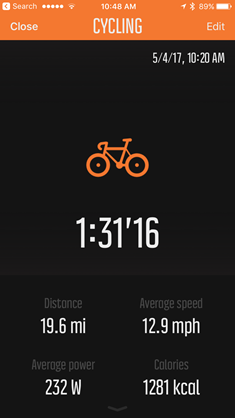
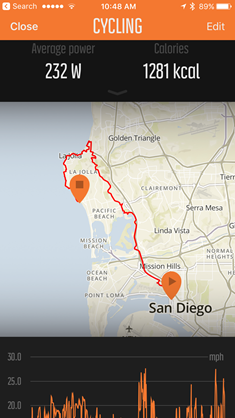
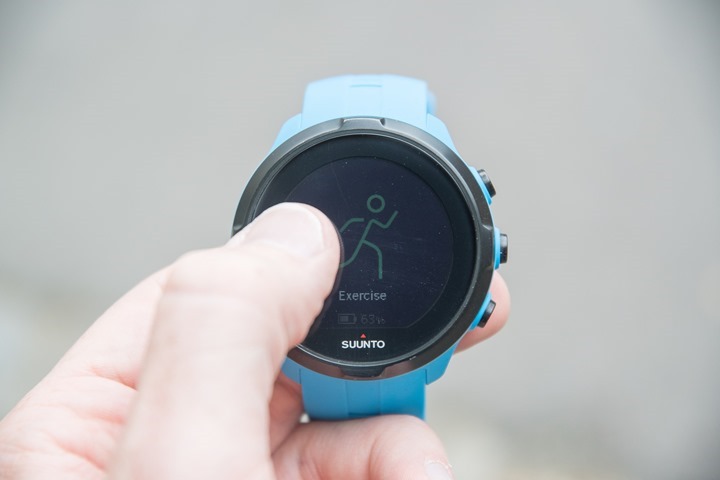

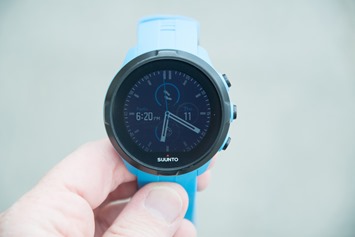
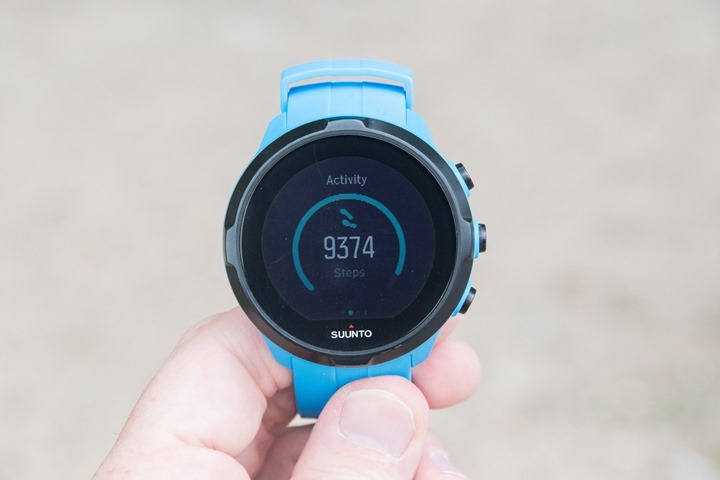
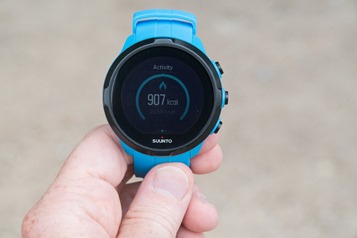
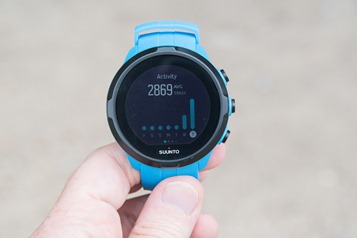
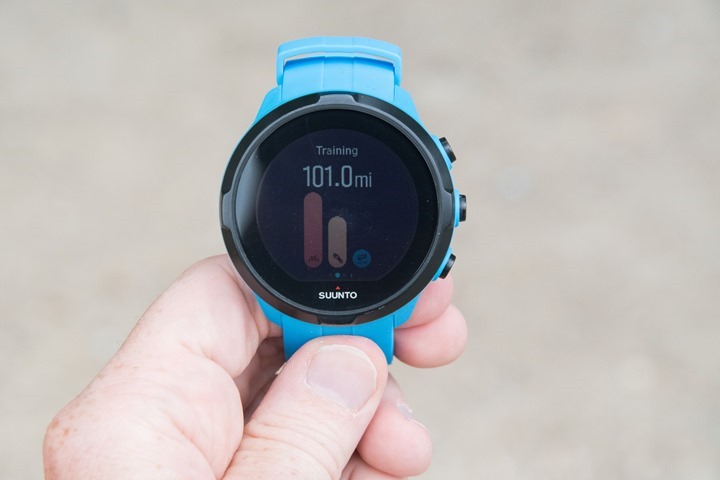
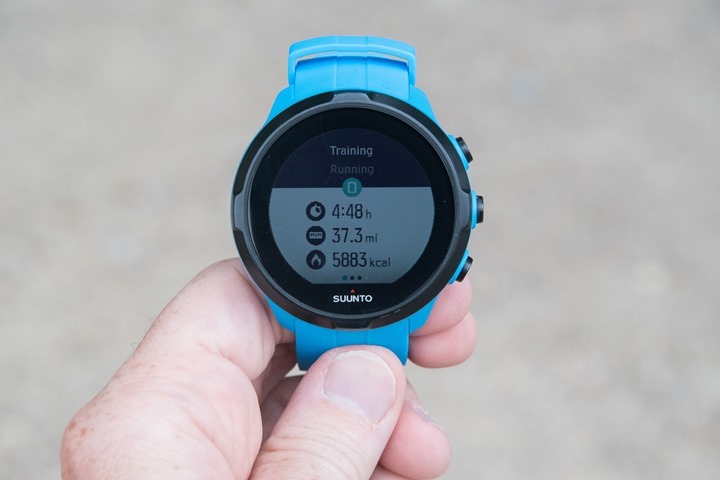
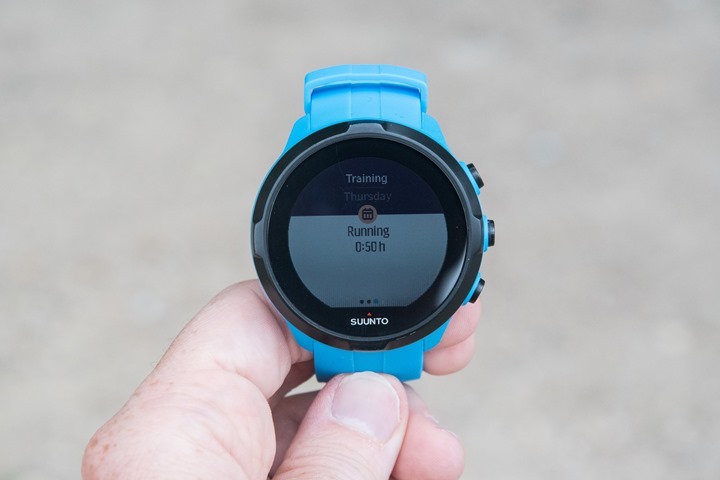
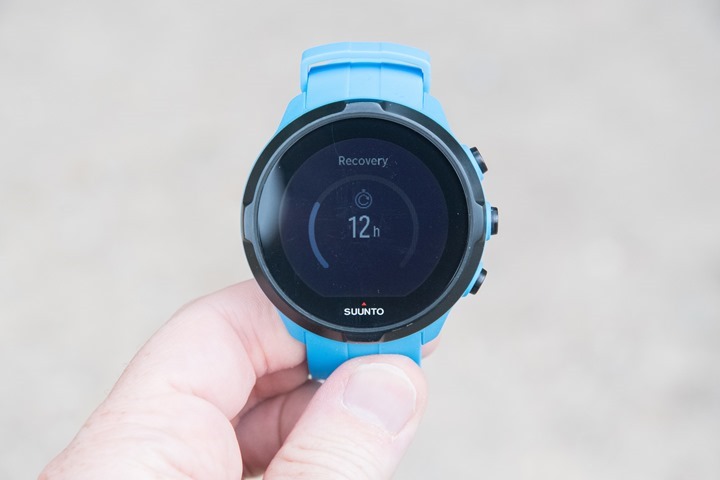
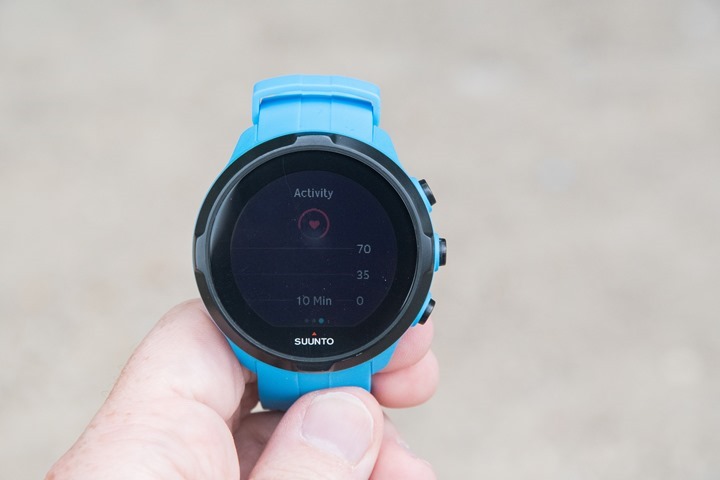
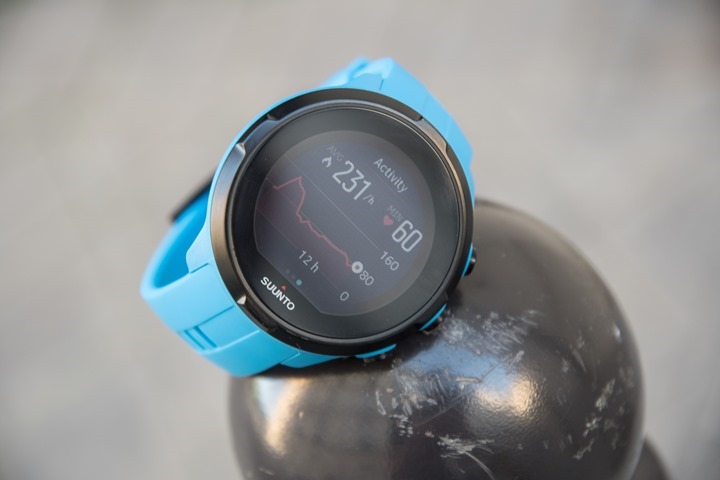
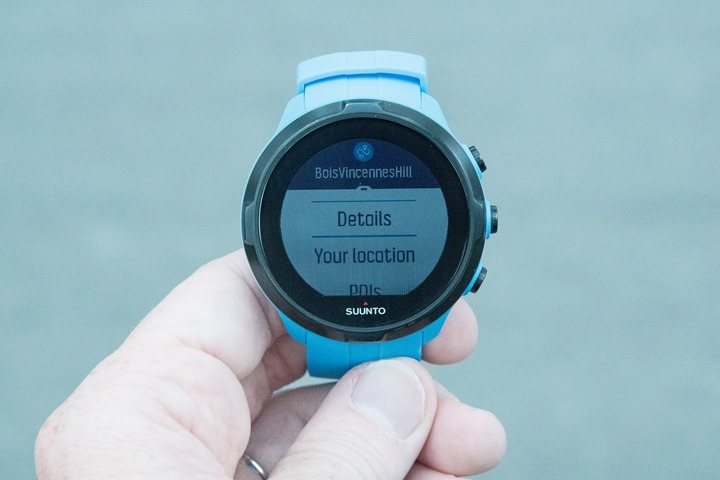

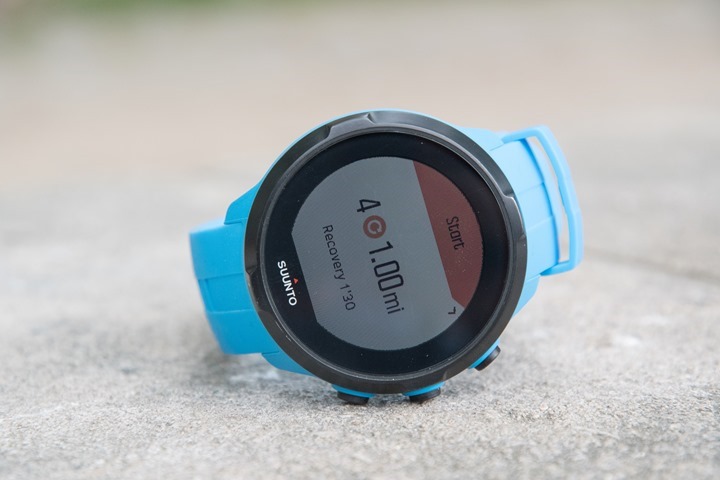








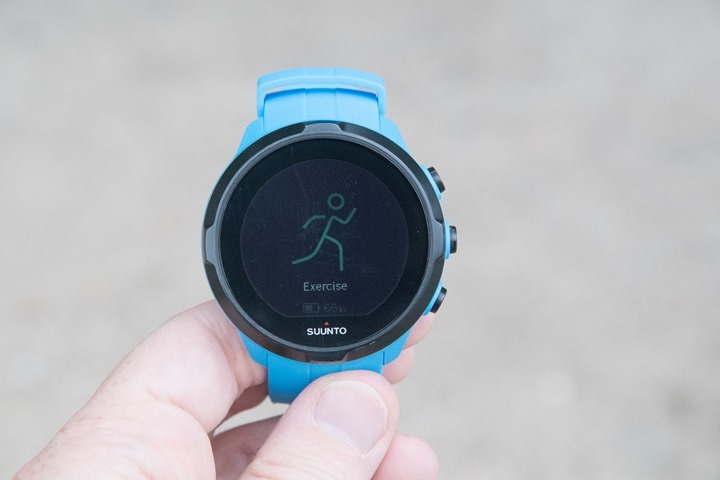
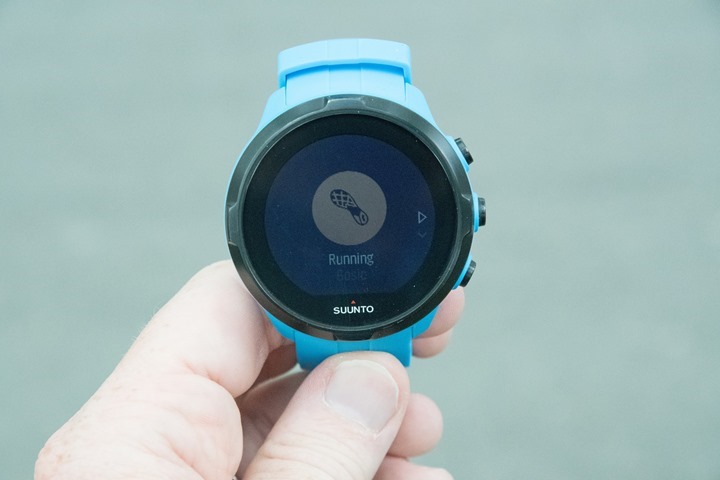
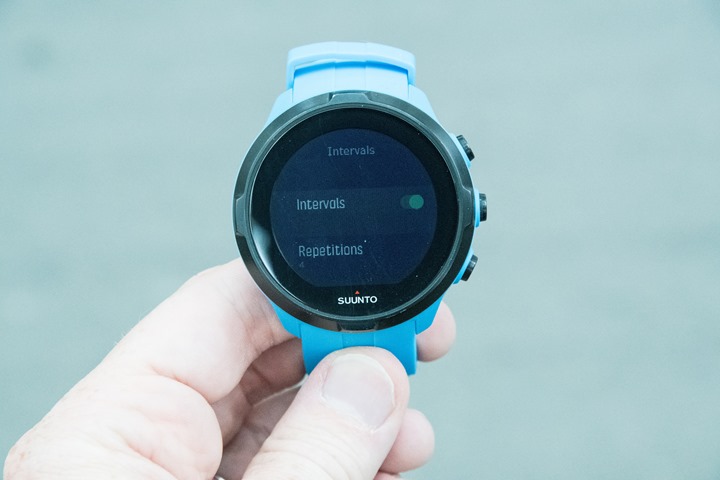
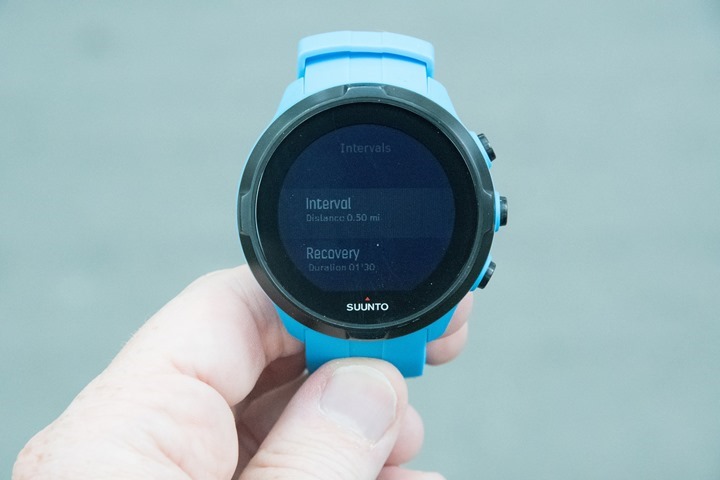
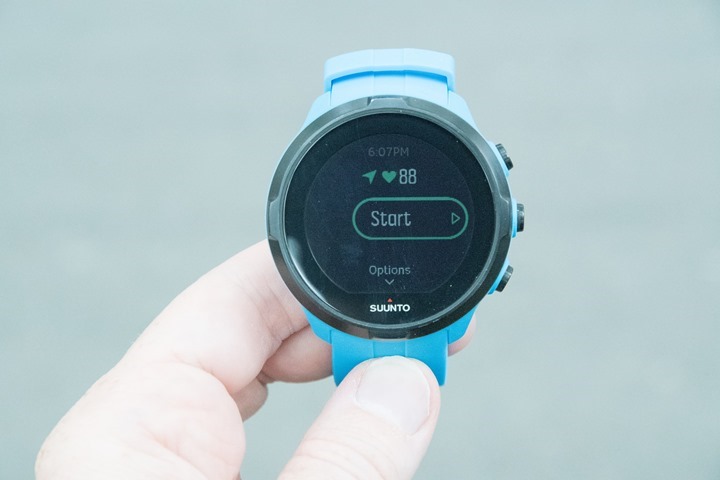
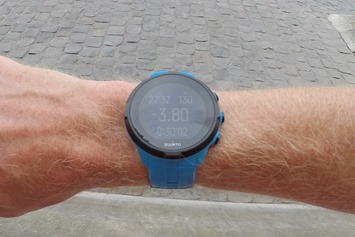
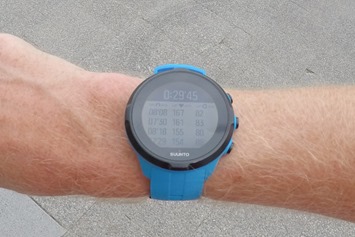
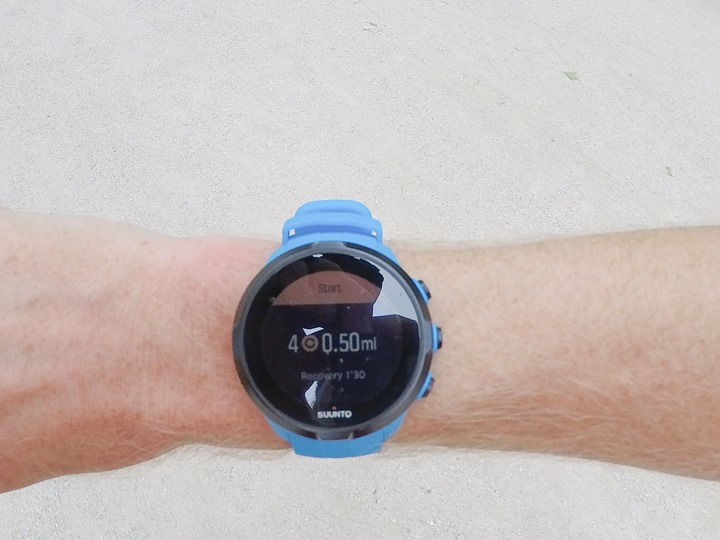
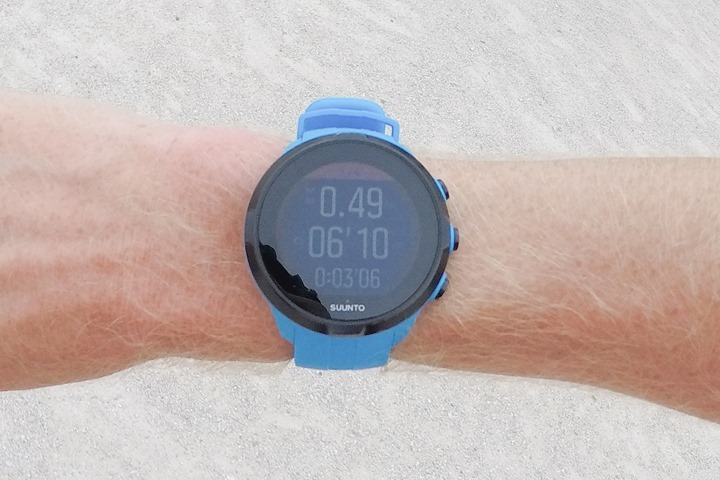
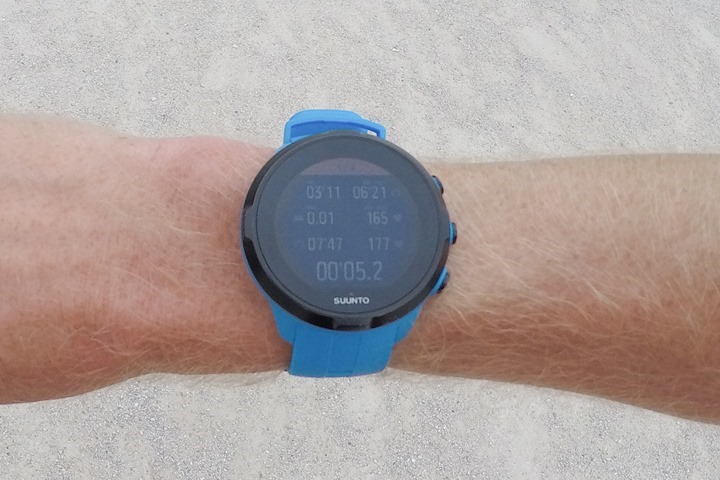



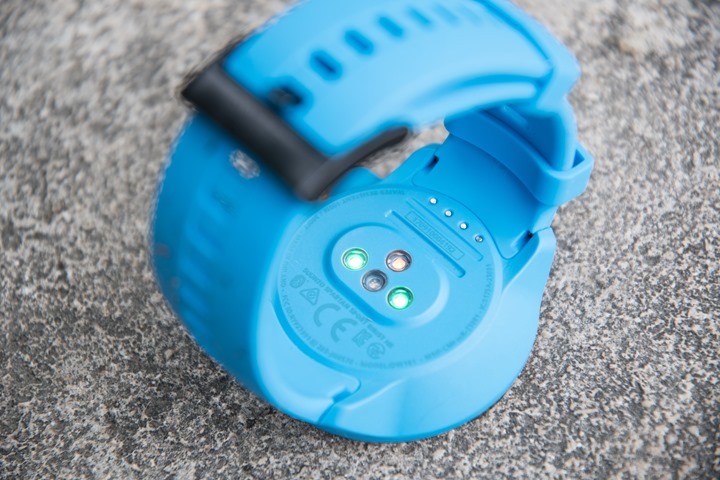
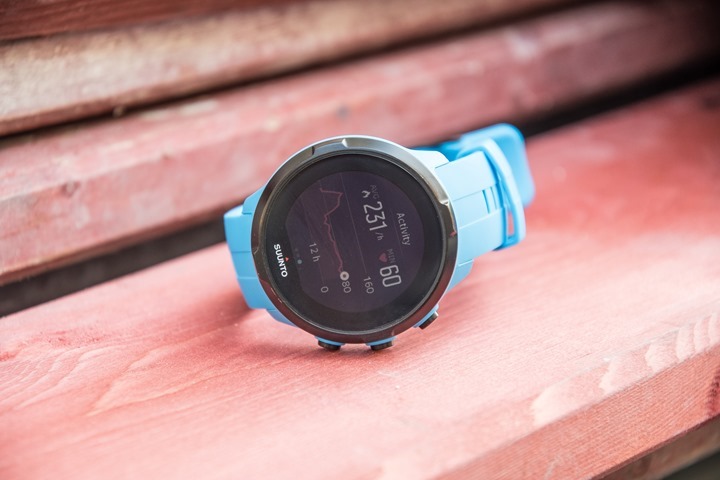














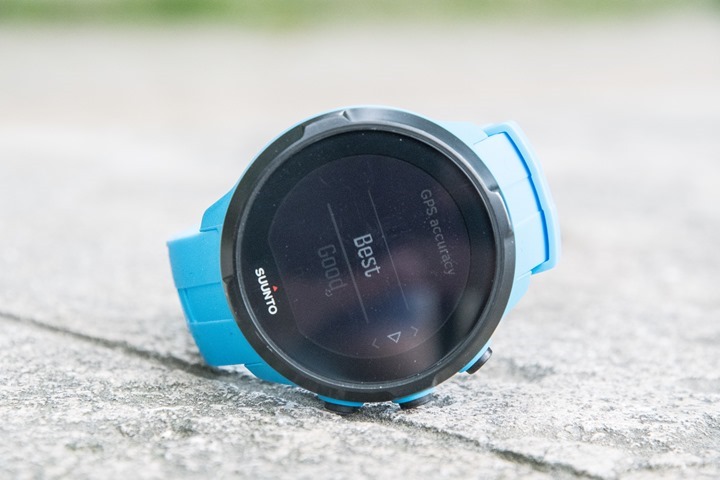








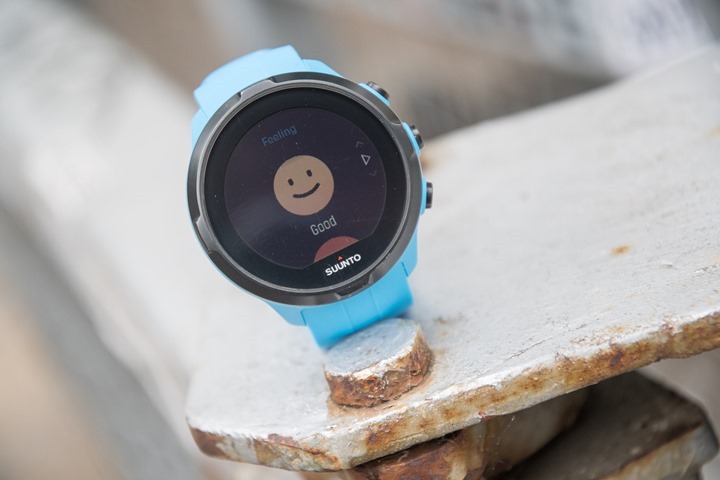





















Another classic DCR review. Thanks Ray for the dozens of hours of work on this one!
Even after reading about this worthy watch, it still feels like the current cycle for the next couple of years is that Garmin will continue to be the market share leader for the endurance/outdoor watches while Apple pulls away as market share leader for general smartwatches and/or fitness wearables. It just doesn’t feel like Suunto, Polar, or Fitbit can close the gap. Maybe Android Wear is the wild card to challenge Apple Watch?
Hello Ray,
thanks for the amazing work ! (again)
keep continue ! we (L) you !
I have also seen issues with the FIT file exports from Movescount, and it’s something that affect other many services. Swimming activities are a mess. Golden Cheetah will not recognize them, and the automatic export to Strava will not add correct distance to it. And I leave the zeros to the end…
Anyway, I like what Suunto are doing to the Spartan series. They have learned that they just simply can’t compete with Garmin feature-wise. And they are on the road for a simple to use watch with good enough features. They leverage is the great screen they are using and all the things they can do with it. Graphics, data pages, columns… The details screen after the workout has ended is also a great example of this.
On the HR front, I’m seeing good results right from the beginning (at least running, cycling is a complete different animal). For example this workout, where the intervals included some burpees along the way. Even with the stops, hands moving and everything, the result is quite good.
link to analyze.dcrainmaker.com
They are definitely on the way to have a good product. Only if they supported ANT+ sensors…
Thank you Ray!
Wrt to changes in HR accuracy. One thing that does change over time is sweating. Not sure if it explains the changes you saw and it may be far fetched, but I do know of research that shows changing sweating patterns over time. Eg. if you cover certain areas of the body consistently, you tend to sweat in other places (i.e. as if your body learns to sweat where it is most effective).
Sounds no good :(
I search new watch yet I can say – Polar V800 is best and noone can over this!
so many years old model but yet best…. good work from Polar!
and I am very advanced level ultrarunner, only watch that I can wear without problems in my trainings
Hi Ray!
I’m a Nordic ski racer hoping to buy a new watch for training. I like the idea of optical HR for recording resting HR and also 24/7 HR. I have a deal where I can get a spartan sport wrist HR for $400. Would you reccomend it at that price over a forerunner 935? I’m looking for good activity tracking, battery life, and lots of accurate data.
One thing to keep in mind is that the Spartan doesn’t record resting HR or 24×7 HR, so that’s something that would probably drive your decision.
On my Ambit 2 I created an activity to record my heart rate, GPS off, and ran that for as long as I was interested. Is this a solution ?
Did the police pull you out for swimming slow in the fast lane?
It was that… or they found the body he was hiding in the bushes.
Hiding among the bushes, not in them :-p
Sorry, bad translation on my side… :-D
By having three distinctly different swim tracks, nobody can find the treasure.
Your English is fine, was a joke based on current us news
I got a chance to test this watch in a race, compared to my own V800 + BLE strap. Now I got interested to compare the data using DCR Analyzer, but I haven’t gotten the required verification email – spam checked several times. Is it just me, or could there be some issue in registration?
Overall, I’d hope that companies would focus on the features OHR can be beneficial AND accurate at the moment – meaning kick-ass resting HR and recovery analyzing features. I’m lucky for that using a strap is no issue, and measuring something just for the fun of measuring (without full confidence for accuracy) is really just nonsense in my opinion.
But of course people need to buy and test these in order companies can develop technology forward :)
Hmm, odd, I’ll follow-up with you offline. Definitely nothing site-wide I’m aware of.
Clear, probably it’s just my hotmail account issue. Doublechecked all spams and rules x10 (well, no rules exist anyway). I’ll try tomorrow with another email
Isn’t this the general problem with any OHR right now, sometimes it is OK, sometimes it is not bad but sometimes it is just not good. Rarely though is it “perfect” hence it is generally unreliable although this largely depends on whether you just want an idea of your HR or something a little more definitive. Accurate tracking of max HR with OHR is, for instance, particularly difficult. This is about how HR straps were 25 years ago when first started using them. I think I have to stick with them for a bit longer yet…
Have Suunto improved on the shambolic firmware of the Ambit series?
Here’s a TEST you Ray (or anyone) can do with the watch and check it out. Setup on Movescount a customized workout made of many intervals of different shapes & sizes (for example this one is bound to last exactly 20 minutes: 4×90″ then 8×60″ then 8×30″ then 8×15″). Then run it on the watch and see how long it takes. On the Ambit 3 it takes…. around 21′. Yep one minute longer. The watch first starts the chrono and then, a bit LATER, starts the customized workout. And so for every segment after that, first the lap on the chrono and then on the customized workout. So little delays add up to over one minute.
The efficient Suunto Support chickened out first and ignored dealing with this and replied only after two months after a number of update requests. Yes, there was a bug, which should have been fixed for the benefit of the (Spartan’s) users, or so they said…
Plus are these buttons still so difficult to snap and prone to fiddle with them like in the Ambit when you are running at some kind of speed that is not a slow run, not to say the impossible to feel Vibration alert? This is not a brand for “serious” runners alas… there is a reason why Garmin has a stronghold on the runners community and gets away with that kind of premium
hmmm… maybe u haven’t had the pleasure of lost workouts or corrupted .fit files. these are common occurences in garmin land; so the grass ain’t greener on the other side!
Ray,
A couple questions, I was a longtime Ambit 3 user but now switched over to the F5x line. But I am curious on a couple aspects which is why I skipped the suunto line this time around. I know you said youd go over navigational apsects later but just have a couple quick ?’s
It says that you can follow a course and navigate to waypoints in the spartan line, I was under the impression that was still not the case.
Also, I hate how even when you have a course in the watch, it gives you a direct line of distance, instead of following the course, Garmin follows the course which I love. Does the Spartan follow the course or does the “as the crow flies” distance?
Kyle, you have been a longtime Ambit3 user and you have never used navigation there? It has been available since the first version of Ambit. It follows the course route exactly.
Stan,
Yes the ambit series follows the course great but when it comes to calculating distance it does a straight line instead of following the intended course.
thanks for the extensive review but i was hoping to see more a statement in the summary paragraph, especially when comparing this unit to 935 for the same price. perhaps you’re going out of your way to be courteous to suunto here.
i’m on my 2nd suunto wrh unit because the first one literally consumed 40% of battery from full charge in 24 hours with 50minute gps activity and hr-always on. To me, this is only a little bit better than you get out of an apple watch 2, which makes suunto a watch that essentially you have to charge every 2-3days. granted you now point out that 24hr HR goes no where so there’s no reason to track it, but eventually you’d think that suunto would want these featured implemented and then you’re back to the limited battery issue.
i also noticed on my runs that in the first 5 minutes or so the HR would blow up to 190bpm and then eventually would settle out.
i really want to love this blue thing, but i’m looking at the 935 that i’m testing next to it, and 935 paired to TRI strap is a powerhouse of data (albeit some of it depressingly overwhelming now that i see how terrible my vertical oscillations are).
essentially for the same price, the 935 addresses all of the shortcomings of the suunto (battery, configurable on the spot 50x different ways, equivalent HR, actually trending resting HR, sleep and whatever else in the app). it just seems that this watch is a lame alley-oop to suunto fanatics, as objectionably i’m not sure why an athlete would chose it over garmin at this point.
well, maybe one reason — and that’s what you mentioned — the heat maps and general maps on movescount. it’s so much cleaner and nicer to find heat maps and tracks to record on the suunto map than on the garmin one — i’ve given up looking on garmin and actually look on suunto first and then try to hand-draw it on garmin afterwards.
Yeah, the FR935 is a tough thorn for Suunto, given the matching price points. I saw similar battery burn in certain situations – blowing through in a worst case example the full battery in about two days with a slightly heavier workout load.
One of the things I stressed to Suunto while I was visiting there is the need to find unique selling features on the Spartan series that Garmin doesn’t have. Areas somewhat like way back when, when they had Stryd running power meter support well before anyone else (by a long time). That sorta stuff.
Looking at the latest releases it seems I will stick to my FR 230 + Scosche Rhythm Plus combo for the moment and wait for a FR 235 successor that resolves its’ weaknesses – foremost when it comes to the optical heart rate performance.
Neither the M430 nor the Spartan Sport seem to make a significant step forward in that respect.
“hey noted that they had seem some similar cases where units had ‘improved’ over time, similar to what I saw. There’s no learning inside it from a software standpoint”
Ghost in the machine!
Does this support other apps like ismoothrun to allow their custom gui?
Apps are not supported on the Spartan Series.
13 years of Suunto from the T6 to the Ambit series…. been really happy with them, great hardware, great customer support but they are just too far behind. Think I will be buying the Fenix5.
Ray, I know that you’re using the P1’s quite a lot. What’s your experience with these in combination with the Spartan series? My SSU only seems to connect with the left pedal, not the left and right separately. I read quite some remarks on the watchuseek forum about the same kind of issue related to the stryd power meters.
Is the Spartan series struggling with multiple Bluetooth sensor connected at the same time?
It’s funny you say that. I’ve seen some quirkiness there, but had figured it was because I forgot to pair the secondary side. I just ended up pairing to the Quarq instead as I was in a rush one day.
Let me dig back into it again on a ride tomorrow and see if all is well.
Thanks
Ray, Did you manage to do a little test for the P1 L/R pedal SSU/SSWHR connectivity? I actually checked with an Ambit 3 sport as well, and it didn’t neither connect to both pedals separately. Afterwards, I checked with some apps, and neither the Virtual training, nor the wahoo fittnes app managed to connect to the pedals separately while using my Samsung S7.
Is this a P1 BLE issue or a Suunto BLE issue? Do you see this with other devices using BLE such as Polar?
Ray,
In the stack height photo, is it just me or is the fenix 5 and fenix 5X really close in height, despite there being a 2 mm difference between the two?
I’ve got SSU a month ago when Fenix 5 came out and was quite big and expensive (before I had 235).
Was quite happy with the screen, movescount and stryd integration… But completely disappointed with the features (activity tracking, hrr etc) but the worst thing was that it can handle only one sensor, has no normal speed/cadence sensor support (ant+ is also a great controverse) – and I have a bunch of bikes with powermeters – I’m not going to repair it every time I go out for a ride:-(
I’ve ordered 935 at the moment it appeared – now I’m week with it and almost happy – moreover it’s almost twice lighter and now have good GPS and altitude tracking!
Hope with new firmware SSU will be also interesting, but seems that Suunto far away with outdoor and sport watches:-(
One more thing – I don’t like deep customisation and programming – that’s why I was worried that most functionality will be waited from IQ user impact – but complete absence of any customisation and programming platform in Spartan – is disaster – on IQ i can find almost any function from user input!
Hey DCR.
Thanks for the review.i got this watch on release day and have seen similar improvements with the optical HR.
I see a strong correlation with increasing outside temperatures. What do you think?
Temperature can definitely be a factor – no doubt.
In my case, the temperatures for those first few weeks were actually pretty constant (and not cold), so I’m not sure if it was a factor there for me.
I noticed that i have crazy heart rate reading for the first couple of minutes on my spartan whr. Then suddenly the heart rate is spot on. I noticed on movescount the RR is being recorded. Are the RR reading accurate? Are they being used to calculated PTE?
Has anyone found the R-R values to be useful?
I have used the original Ambit and now the Spartan with OHR, and in both, the R-R is just the inverse of the Heart Rate.
This means it’s not some sort of extra measurement the watch is doing, it’s just a simple calculation based on the HR.
For example, take any move and check the HR & R-R values at a specific point. Example:
link to i.imgur.com
Heart rate: 116 bpm
R-R: 517 ms
Simple calculations:
116 bmp = 116/60 beats per second.
Another way to express this is 60/116 seconds per beat
The time between beats = 60 / 116 seconds = 517ms
In other words the R-R seems to be just the inverse of the HR. Does anyone find any different results?
Dear Ray,
Thank you very much for all your reviews. *Thumbs up*
I am an Suunto Ambit2 Sapphire and Ambit3 PEAK Sapphire user and thinking between the Suunto Spartan Ultra or Spartan Sport Wrist. Any good reasons for buying the Spartan Ultra? In my opinion the Suunto Spartan Sport Wrist has all the future technology on board and will improve with firmware updates plus enhancements on the Movescount plattform itself (hopefully).
I don’t see any strategic reason for the Spartan Ultra in the Suunto product portfolio. For long distance triathlons (battery) still I can use my Ambit3 PEAK.
Question:
1. Can anybody share some experience with mineral glas? I hit my Ambit3 PEAK Sapphire watch several times on objects. So far the glas on my watch looks like new. I am not sure if the mineral glas survives in the combination of beach / sand and using the touch menu.
2. Suunto Spartan Sport WRIST: Is the battery energy consumption with a HR strap in sport mode the same like with the optical HRM? Target would be like 15h with HR strap and GPS.
The optical HRM would be just interesting for the recovery at the moment.
3. How does the coating on the bezel handles scratches. Does the “color” disappear with the time on everyday usage?
Thank you very much in advance for your opinions.
1. I have many mineral glass GPS watches lying around. I have only scratched one, and it was my entire fault (leaving a back pack with it attached to the strap over some rocks). The rest are just fine with normal wear, including beach swimming.
2. OHR consumes more battery than the HR strap.
3. I have been testing the Spartan Ultra Titanium for months, and the Sport WHR for several weeks. On the Ultra I can easily see small dents on the bezel. Nothing huge, but I would expect more from the “grade 5 titanium”
Great review as always, DCR!
Wondering if anyone can confirm if the contents of this review (included the updates/fixes) apply to the original (non-HR) version of the Spartan Sport as well?
Basically confirming that the Sport and Sport HR are identical in every way other than the presence of the wrist HR?
Thanks!
Mike
Yes, everything is the same in the Sport WHR and Sport. The only difference is that related to the OHR (workouts, the activity part and battery life).
Thanks for the quick response!
“One of the challenges Suunto has though is finding a way to differentiate themselves.”
Make reliable stuff that works. The Fenix 2 was such a disaster in recurring lockups, failures, and issues that after going through FOUR defective units in 6 weeks, I moved to the Ambit 2 and never had an issue. Am sorry to hear that the Spartan was a cluster on first release. I’ll give up on numerous features and apps and junk if I can get a watch that is reliable. Long run times, and does what it says. Sure, I’d prefer optical HR, phone integration, custom apps, 24/7 monitoring, blah blah blah, but none of that is worth having to be my own IT support for unreliable hardware.
Been waiting on this review fir a while!
I think I have a workaround on the WHR acting up initially in the first few weeks or so.
I have the Rhythm+ arm band and what I discovered is, if I start a outdoor or indoor treadmill session within few minutes of wearing the band, the spikes definitely happen and then normalize after 15-20 mins of activity. My suggestion is to wear the band or the watch 15-20 minutes before you begin an activity. I have tried it personally and it works pretty good. I believe it could be a bug with the HR module built by Scosche and not really the fault of Sunnto.
Thanks.
I do a lot of nontraditional cardio work and like to pair with a schosche or a chest strap. Can you pair multiple heart rate sensors to the watch like on my fenix 3 hr?? I currently have 5 HR sensors and I really like that garmin lets you name them as well. Anything like that available on the spartan sport wrist Hr??
thanks,
As a Nordic racer, you should remember that you won’t be able to see a watch if you use it to take HR. A chest belt is both more accurate and allows you to wear a watch on the outside of your clothing where you can see it.
I cannot even believe they have no version with optical HR and barometric alitmeter. How much cost would that even add? As a trail runner that is one of the biggest differentiators since GPS alone will give you pretty wacky vertical readings. Since it is so important to some runners I even understand why you would use it to get people to buy the most expensive watch but for Suunto you can’t. For some reason I like Suunto more as company then Garmin but I just can’t buy it over the FR935.
FWIW – The specific concern with the Spartan Ultra edition and an optical sensor is the added weight of the Ultra edition means it introduces more ‘bounce’, which reduces accuracy.
I fully agree, I too would be interested in a version combining OHR and barometer and find it baffling they have no version combining both.
While weight will always have an impact on bounce and therefore accuracy, I can hardly believe the few added grams of a barometer to the sport version (or the few added grams of a OHR to the Ultra version) will impact accuracy that much. In fact, Garmin has combined OHR and barometer on all their high-end watches (935, F5, F5S, F5X) and in the reviews and forums nothing seems to indicate the WHR is significantly less accurate in the heavier watches. Even the 5X, which weighs significantly more than the Suunto’s, seems to be doing just fine.
In fact, this lack of Suunto to offer WHR and altimeter in one watch is one of the deciding factors for me to very probably opt for a Garmin F5 over the Suunto offerings.
Sorry, just to be clear – it’s the increased weight of the Ultra over the Sport, not so much the optical sensor.
The specific design of the Suunto Spartan lineup has the top being ‘heavier’, so it ends up being more top-heavy and thus more prone to bounce. You can see this pretty easily within the size comparison section, compared to the Fenix 5, which is bottom-heavy and thus doesn’t bounce as much because that’s against your skin.
What are your experiences on the battery life on daily use, meaning non-sport? I’m looking this as an option to replace my FR60 that I now use more as a regular wrist watch. I really like the new Forest color option. I exercise perhaps once a week for an hour or so, outside that it would just serve as a (smart) watch.
How much of battery life could I expect? Suunto promises 10 days on their website – I’m wondering how far off that promise is?
I bought this device and really tried to love it. It was intended to replace my V800 because I want OHR, modern screen and more daily looks.
I love the hardware and like the software generally. Movescount is also great and operation of the watch is easy and logical.
The GPS is as accurate as the v800 was, the OHR performed almost identical to my V800 with strap.
I also think it has a good pricepoint acceptable as a premium Sports Watch.
Nothing to complain up to that point.
A couple of things i dislike is that it lacks a virtual racer/pacer function and Return to start navigation. How stupid isn’t that on a premium Sports GPS watch?! Also syncing takes noticeable longer time then competitors, up to 5-10 mins…
All these might though be fixed in future SW releases (and I even think Suunto has announced in a FB post that some fixes are coming in June)
However: Battery-lifetime killed it for me.
It lasts for a couple of days, might be enough for a lot of people, but way to few for me.
Less then 2days of normal watch use with 2syncs, 20k run and it was down under 50%.
For some it might be enough, but for me it’s so far away from my v800 that I can’t keep it :(
I’m a bit sorry for this, because it so deserves better battery!
I would have loved it and accepted some SW flaws and it could be a great V800 replacer for me and maybe even compete with Fenix in many areas… :(
So how long does the battery actually last then, with just regular watch use? You say to under 50% in a couple of days, but that included a 20k with GPS on. Far from empty still. As a reference my Spartan Sport (no optical hr) lasts about a week as a watch and step/calories counter. Don’t sleep with it on though, so it usually just loose one percent overnight.
Sync duration is obviously dependent on length of session(s) syncing. I just opened up Movescount on my iPhone, it connected to the Spartan within a couple of seconds and finished ‘syncing’ within 5 seconds after that. That’s how long it takes to check if there’s anything to sync. What kind of session(s) did it need 10 minutes to sync?
And yes, Suunto said that ‘return to start’ will be available in the beginning of June.
Good to hear Youre finding it better then I did!
I would expect the same battery time from the SSWHR.
I dont either use it at night and I didnt write a couple of days. It was less then 2 days.
I did not completely discharged it, because i got to a point where I needed to decide to keep or return it.
I found it way more weaker then the v800. However this was from a percentage view. Perhaps its not completely fair, but as i wrote: I needed to decide and I didnt find the confidence in it.
As of the sync: Im running Android if it makes any difference. Ive never did a sync regardless of activitys or not that was faster then a minute. But I usually sync when I have activitys, not when I don’t have nothing to sync…? Once again comparision is made to v800 and its sync time so I”m not making things up here.
But this was not the dealbreaker for me.
I might be picky but this is a $400+ device and I think i have the rights to be so. Once again: I really liked a couple of aspects of the SSWHR and wanted to love it. It just didnt make me fly. Other people might find it better.
Btw: If it wasn’t because i want Optical HR I would for sure have ended up with the SSU instead. It has both saphire but more important a bigger battery. These arent bad devices, just not for me.
i’ve been “testing” my 3rd SSWHR because i wanted to love the watch but the battery and poor HR.
for example yesterday, i went on a “hike” which is really a walk just to run through the paces, a 37 minute recording at best (because when i did good it showed that i was walking in a lake and not in a path) drained the battery at 9%, extrapolate that out and you’re getting a little over 7 hours of continuous recording.
this is not acceptable, at least not to me and not for a $500 watch. that means in the summer if i go on 50km rides i essentially have to charge the watch every single night because i can not trust that it will make it through the next day’s ride.
the HR spikes during this walk also showed that my HR maxed out at 168, which is absolutely crazy and my 935 worn on the other wrist never peaked above 110.
consider yourself lucky with the iOS sync issue, my first watch literally went back because it wouldn’t sync with my phone for over a week — read through movescount iOS app reviews, it’s literally at 1 star (and that’s probably because people can’t give it 0) and you have report upon report of sync stopping working sometime in march.
add those 3 things together and you tell me unless you’re suunto fanatic whether you’d spend $500 on such a device?
I don’t doubt you, and I don’t obviously have the exact same watch, but to add my experience, from today: ran for 34 minutes, timed my iPhone sync when I got back, it took 40 seconds. Bluetooth syncing seem to be difficult, all vendors I’ve used have had problems (Garmin, TomTom, Polar, Suunto). With the latest sw versions as of May I find that my Spartan will sync every time if I remove the Movescount app from memory by swiping up from the app list and restarting the app. I don’t think I should have to, but it works and is no big deal. I also see that Suunto has improved syncing on their June fix list, we’ll see.
To finish off my sync tests, synced fine again (swipe up/start Movescount). This time there was no sessions but an GPS SGEE file update, took 20 seconds. It is a good idea to sync before using the watch, to update the SGEE file. See Settings/General/About/SGEE on the watch.
No question that your sync is working fine. Mine was working, but took noticeable longer time then for example v800.
Head over to Google play or Suuntos Facebook and You will find a lot of lost of posts regarding sync regardless of Spartan or ambit:
link to play.google.com
The sync was not the deal breaker for me but its something people should be aware of. It is just not working perfectly according to a lot of people.
Best detail review~!
I wish it was released before purchaing my spartan WHR…
Suunto used Valencell HR monitor and it was their sale’s point. But, when I doing squat, deadlift, benchpress… the monitored HR was so slow to catch up my real heart rate. And just 30min of walking it was up to 160… mine was not that hard…
I attched youtube video and capture.
link to youtu.be
Quick question. I choose the Sport over the Ultra because I wanted to use it as a day-to-day watch and found the Ultra far too thick and bulky for daily use.
I am missing the barometric altimeter though. Do you know if there is an external barometer I can pair with the watch to get this reading? Sort of like the Foot Pod or the Garmin Tempe?
Thanks!
I found one really anoyng bug. When you train and you pause or autopause you can not see the training activity data. You can not review laps, see averages or do anything else just see the training activity duration, hours (clock and battery remaining). I like to analyse my effors when i train and do short time outs. I could see the data on Ambit 3 peak and ajust my efforts on second or third part of training. Solution could be not to pause and dissable autopause but then one would have one or few akwardly long (in time) km. messing up other averages.
I would really like to buy the suunto, as my experience with the brand is very positive (related to diving computers that is). On the other hand, the bulky wrist sensor turns me off. I’m afraid that if you wear this watch 24HR you’ll get a nasty imprint of the sensor in your forearm. The only viable alternative then is the Garmin fenix 5, which I find really too expensive. Could you give some feedback on the comfort of the device when you wear this all day ?
I thought it was really nice to wear due to it’s softer band.
I ended up with a F5 but regarding comfort i thought the suunto was less noticable to wear.
Hi, Thanks a lot, got different information and tips. really useful.
ciao
Maurizio
@JW
The optical wrist sensors are not capable to give you quality readings in strenght training. Doesnt matter which brand you have it is always necessary to use a HR-chest strap. Makes sense if you read about how wrist sensors work.
Just buy an external chest sensor and you are good to go. Technology is the limiting factor not the Spartan.
I just cant get my head around Suunto killing of the custom apps feature. Why????
You were one of the first to introduce it.
I am sorry to tell it like that but this is an eternal dumb move.
Is there an official anouncement that they will include that with a future update? Or why they did that?
Does it make any sense?
As a lifelong Suunto user I will buy the watch in a heartbeat if they fix this.
Does anyone know how to wipe all data clean from the watch if I want to sell the watch? I went to the fenix 5 and am happy again….
I have a question, hopefully you can help me, or others in the comments section.
First off, thank you for your thorough reviews, they are truly excellent. After reading a bunch, this is my go to.
I started training about 12 years ago, and got into tri’s about 10 years ago. My first “serious” watch was a Suunto T4 (wanted the T6 but was out of reach at that time). I really liked back then their use of TE (and T6’s EPOC etc) and the feature that let you see TE in real time. The watch would show you a milestone reached, and time till next (say if you kept that pace for another 5 mins, you’d reach TE 3.5). FF a couple of watches,
and then I got the Ambit 3.
Now I am looking for the new wrist based HR ones, and considering moving to the Garmin side with the 935 (IMO borrowed looks from the Spartan). I see the 935 has a great interface with EPOC and TE etc..
For me, the reason I liked the Coach feature and the live TE on the old Suunto was because it was a target to reach on the training schedule, and you could push yourself a bit more to reach that goal, rather than finding out post workout…
Do any of these new watches offer a live view at the TE? Or has FirstBeat decided the best use of it is only post workout?
In any case, I am between the 935 and Spartan (or perhaps waiting for the Spartan Ultra to get wrist HR [barometric altimeter] ) ?
Any thoughts are appreciated.
@ Bill
I wear the watch 24/7 and it feels much better than the previous Ambit. Much better strap, lighter and I do not feel the hr sensor. I`d say its a very comfortable fitness watch.
@ JC Quinn
I am not an expert but I am answering because just like you I am an avid Suunto user since T4/6times. The new Spartan is the first generation were I struggled what to buy. Looked closely at Garmin and they win at features but I still went on and bought the Suunto wrist HR all black.
First your question regarding live TE: you can set the watch to show EPOC, PTE and resting time during a run. hope that answers the question
pro Spartan:
1) I prefer Suunto movescount to Garmin. Its not that Suunto has more features, I guess not, but the way it is presented feels clean and just works for me.
2) The quality of the watch itself is very good. Screen, build quality, haptics. Were Garmin 235, 735 feel like toys the Spartan gives more of a solid watch feeling (Fenix wins in this category)
3) the screen itself. Its big (like Ambit series big) and if you dont like that 735 and 935 or Fenix 5S are the way to go. The fonts are an eye catcher contrary to Garmin. Thought I`d never use the touchscreen and find myself almost exclusively using it. Great (unnecessary :-) ) feature. Imo best screen of all watches.
neutral:
the HR sensor. So far I am not impressed and have the best results with a MIO sensor (minimal difference to chest hr) but think Suunto with Valencell will quickly catch on (this is solely based on trust)
5) The strap. Its very smooth and the best strap I have worn with a sports watch until today.
6) Price: I decided between 935 and Spartan wrist and got the Suunto for 330€. Thats much cheaper than expected and a steal.
Contra:
1) The Spartan series at the moment has still some quirks with heart rate and I guess software. My screen freezed with hr display and never changed until the end of run. Others have the same problem . As I later found out it recorded correct but did not show it while running and at the beginning of a run the Suunto shows way too high hr readings (ap. 5min). I am trusting Suunto to fix this. If not that could be a dealbreaker.
2) battery life is not as great as with Ambit series and Garmin has the edge. I dont have a problem with it but others might see this as important.
3) no virtual racer / pacer: I do hope they will implement this in future updates. The race mode in running is described similar as a pacer and you can enter a target time but I could not find a pacer compare function while running. Maybe I did something wrong.
4) no barometric altimeter.
In the end it was not enough to let me change to Garmin and I bought Suunto again because of the above mentioned arguments and because Suunto always delivered in the past. We will see how it goes.If the last software updates are an indicator I think we are well on our way.
Thanks for the comments!
I think I’m getting the wrist hr!
Funny my experience is completely the opposite!
I use the Spartan Ultra for ultras and the spartan wrist HR for shorter runs and intervals. I´ve been trusting Suunto´s products for years. I haven’t had the battery issues or HR problems here described.
Garmin Fenix is a watch which has caused me so many issues I can’t count (freeze, GPS, …
Can someone please explain to me how to use the target time I can set in run/race mode? I wanted to use it as a pacer but cant find a setting in movescount were I can display this target time during the run. At the moment seems useless. Am I missing something? I would like to compare it to pace, 1km time..etc.
And if I create my own mode in movescount I cant apply graphics (HR..) as a screen. Any solution?
@BEreal
maybe my comment came along to negative. Its just that I looked at everything possibly to critizice with Suunto and not with its competitors. And I have to take back my statement about battery life. Now after more time with the watch battery life is just fine. If Suunto continues to do their software homework this seems to be the best wrist HR watch by far on the market. At least to me.
There are other factors besides the features involved when you buy a GPS watch. At least for me the design is extremely important. The new Spartan Sport Wrist HR Gold is by far the best looking product on the market. At least if they fixed those bugs that you’ve mentioned above, it’d be popular because it looks stunning.
Excellent and very complete review. Thanks for writing it. Your table shows internal temperature sensor capability for the Suunto Sport Wrist HR but mine does not record temperature for activities. Can you double-check that?
new Update today to 1.9.36
-Start planned Moves on your Spartan -Find back navigation
-Notifications for daily activity targets (steps and calories)
-Triathlon mode customization -Do not disturb mode
-30-day activity sync after software update
-Enhancements to watch-app connectivity (pairing and sync improvements)
-Additional bug fixes and performance improvements
So far so good but in my logbook I now get no info at all about heart rate, altitude.. I hope this is only because it synced all moves in the last 30 days to the watch and may have overwritten my original saved trainings. Otherwise if they keep it like that loogbook is far less useful.
Besides the logbook problem annother positive step in the right direction.
Thanks for this incredible review.
Would you say that the Wrist HR is better than the Spartan Ultra or not ?
JJ
They’re different. Kinda depends on what you want.
Software-wise, they’re identical now (save the optical-HR only function of 24×7 HR on the Wrist HR).
But remember on the hardware that while the WHR has optical HR, it lacks the baro altimeter and longer battery life of the Ultra. So if those features matter to you, then you’d have some decisions to sort out.
thank U
Hi had the Spartan Ultra HR (copper)for a few days, and like already because it doesn’t look too bad when not doing sports.
I do have a problem reading messages coming in on the screen of the watch due to the font size.
I am +1.50, and my arms aren’t long enough to read without glasses apparently.
I dont understand why font size is not an option?
Btw, thanks a lot for doing a great job!
Hello
Thanks for the deep in review as usual. Thanks to this page years ago I selected as the optimum triathlon watch (at my expectations) the suunto ambit 2s. I’m still using it and really happy.
During this week I have at my own a test device from a local shop. Suunto Spartan sport wrist HR. Trying to configure sport modes I’m getting troubles to configure multisport modes rather than triathlon.
It is impossible to create a biathlon (run+cycle+run ) mode or at least I cannot find the way to do.
Also is annoying not be able to customize the predefined screens and have to create a new sport mode (under the umbrella of the predefined main sport mode.
Thank you again
Regards
Miguel Ángel
I’m playing around with the watch and trying to create a custom sports mode e.g. Running but can only add 4 displays and can’t select a graph display. Is that just a limitation or do I do something wrong?
I had a similar experience. For now, you can determine the number of fields and type of fields but I don’t think you can add graphs right now. At least I didn’t see how to do it.
i am a rower and there are not a lot of watches that support stroke rates. On Movescount i found that that were able to measure the stroke rate but this was all for the ambit series. As i am not known with the program and if it can be used on the spartan serie can you find out?
i have used the garmin vivoactive hr watch, it worked great until after 10 months and it broke down completely. furthermore i really didn’t like the garmin software, the data i got out of it i could not adjust (calculate average speed over a smaller time frame ect) is this possible with the suunto software?
thanks
Hi all, I’m following the comments here with interest. Since my daughter appeared in December, the odds of me doing another full IM for the foreseeable future are close to zero. 70.3 however should be fine. Has anyone here used Spartan with wrist HR for a 70.3 yet? If so, what did you think? If the battery can last five to five and a half hours then that should work quite well for me. Thanks for any responses! I’ve been using a 920XT for a few years now but really like the Spartan as a possible replacement.
I used a Spartan Wrist HR last week for an Olympic distance event, took me 3h10 and the watch was showing 50% battery at the end iirc, bear in mind some juice goes before the start as it picks up the satellites before pressing the start button. This was with a bike POD for cadence/speed and an HR belt too.
Hello, friends!
I’m pretty frustrated with this watch.
– I do not understand why you can not edit the interval training fields. Is that possible?
– Using Stryd, I would like to have the pace through the Stryd, but the system do not let me. The Stryd team said that power is currently only possible. If you put the pace through Stryd, you do not have power. Is it correct?
– I also do not know why it is not possible to disable the navigation screen. All other screens are editable, but the navigation is fixed. Is it correct?
– I have not yet found the option of a field to observe manual lap time. The “lap time” field shows the automatic lap time. Should I turn off the automatic turn to achieve this? What is the field to get the manual lap time?
– Unlike Garmin, I do not find the option to leave the GPS only for recording the route, leaving power and pace on behalf of Stryd. Is it possible?
– Also, I have not found the possibility of creating alerts (sonorous and vibrating) for both pace and power. Is it possible?
Is there any forecast for the implementation of these features?
Thanks!
currently you can have either power or pace. if you want both you currently need another pod (buy a milestone pod for $20). currently Spartan can’t handle single sensors that output multiple data types.
nav screen in custom sport mode – hmm. yes. looks like you can’t remove that.
tones/vibration can be set in movescount/general
basically the config options are before you start the sport on the watch and in movescount. I imagine you knew that!
Friends, thanks for the comments (tfk, I love your site)!
Frustration remains! It is visible that the watch was released ahead of time.
Even with the latest update, the problems are countless!
– Impossibility of interval training screens customization.
– Limitation to the use of Stryd (despite the propaganda of native Stryd).
– Impossibility to disable the navigation screen.
– Screen with manual lap time is only possible if you disable the automatic lap.
– Impossibility to leave the GPS only to register the route, leaving pace and power for the Stryd.
– Impossibility to create pace and power alerts (tones/vibration can only be switched on or off).
– As stated by DROR, there is a need for more contrast on the display.
Suunto should invest heavily in these improvements, as they are urgent.
I already got in touch via Twitter and email but no response.
To tell you the truth, I’m feeling like a fool.
SUUNTO hugely disapointed it’s fans with the premature, AMBIT3P inferior, IPHONE-7 priced SPARTAN.
And they are not listening to their customers, not even to their suppliers. SPARTAN is a big failure, I wish they stopped trying to pump it up and give us a whole new reliable product like they used to. First of all I need a strong contrast black over white display like in previous watches.
Meanwhile I stick to my AMBIT3P, but who knows for how long.
I agree. I really want to like this watch but (for me) the Ambit 3 and Fenix 3 work better. I was disappointed with the Wrist HR, resold it, and went back to my Fenix 3. Really hoping that Suunto can accelerate the firmware improvements and make these watches more competitive — although I didn’t care for the touch screen xface and the display was more difficult for me to read vs the Fenix and A3P.
Hi, Friends!
Suunto just answered me.
“Thank you for letting us know about your concerns regarding the Suunto Spartan Wrist HR All Black.
I will answer your questions one by one:
1. You will be able to edit the interval training fields through the watch and the application. Click on the link below for the procedure.
2.For your Stryd concerns, only the Stryd team can provide the data or the answers to your questions.
3. Navigation is fixed and cannot be disabled.
4. You may Turn off the autolap so that you may access the lap button anytime you want to go on manual. No, you will not be able to use them both simultaneously. However, you may activate the autolap on one sports mode and deactivate it on another sports mode.
5. Leaving the GPS only for recording the route is not possible.
6. Creating alerts is not an option as of the moment.
I will go ahead and make sure that our development team will know about the features that you want so that they may include it on the next software updates.
Thank you for your suggestions and feedback.”
Very disappointed.
Compliments is a pleasure to read your reviews.
I’ve got subit ambit 2 and then the garmin fenix 3, i also bought the subit ambit run and honestly the subit ambit run is really a fantastic watch: easy, accurate and i think nothing to envy to the various top of the range …. I’m a trailer that loves all these gadgets ….
Hi Ray,
No swim drill on the Spartan?!?! Can you please confirm? I’m testing the Spartan Sport Wrist HR this week against my Ambit 2S and was totally bummed yesterday at the pool when I couldn’t find a way to add swim drills on the Spartan…how is that possible? Even my Ambit 2S can do that…..
Will be testing in running and cycling also…
Thanks!
Hi DC Rainmaker,
You seem to speak directly with Suunto.
Do you have a sense of whether or not they plan to release a Spartan Ultra that also includes the wrist HR monitor? And if so, when that might he released? I’m looking to buy a Suunto watch and want one with all the features and battery life of the Spartan Ultra, among with the heart rate monitor of the Spartan Sport.
Are the Spartans your favorite exercise watch? And if not, what is?
Thanks!
I don’t expect an Ultra with optical HR, at least anytime soon. Suunto has noted concerns with inserting an optical sensor into an already heavy watch. While the weights are similar to the Fenix 5, the difference is that the design of the Ultra is more top-heavy than the F5.
The reason that all matters is that the more a watch bounces, the less accuracy the optical HR sensor becomes.
Got it, thanks for the reply, DC Rainmaker. So out of all the watches you’ve used, tested, and reviewed do you have a favorite?
I currently prefer the FR935.
thanks again for the super quick response, DC Rainmaker!
Qualitatively speaking, which is better – the FR935 or the Fenix 5?
I thought it was sad to see that the FR935 doesn’t have a Sapphire glass option – unless they’ve evolved their glass so it’s stronger and unnecessary? the FR935 is the newer model of the two if i’m not mistaken? if so, i’m surprised they didn’t offer that option – it’s as if they see the Fenix as their flagship model, despite the fact that it’s older.
The Fenix 5 has better external materials, but the FR935 doesn’t seem to have the dropout issues that the Fenix5 does with some 3rd party sensors.
I haven’t seen anyone actually scratch their FR935 due to lack of sapphire glass. In my opinion, the entire sapphire glass thing across the industry is merely an upsell for nothing.
The Fenix 5 is only 4 months ‘older’ than the FR935, and yes, it’s seen as their flagship watch.
Hi DCR,
Do you know if/when suunto are planing to add custom application capability to the spartan like in the Ambit?
Thanks,
Shmuel
Suunto hasn’t committed to doing it, let alone a date at this point. There’s been some rumors here and there, but I wouldn’t expect this to be a near-term feature.
Hello Ray,
thanks for the amazing review
do you know anything about the same watch with a barometer?
i think they will launch the same model with the altimeter type barometric instead of gps .
Hello: Has the release of the Spartan Trainer and any firmware updates eliminated any of your criticisms, bugs and quirks related to the Spartan Sport? Many thanks,
I bought the watch and I really love it. It is a lot better now and there is more coming soon from suunto. They are improving a lot. Is built to last, looks great and gives a lot of data. Had polar’s before and I like suunto more. Garmin can’t say anything about their watches, don’t like that company and I’m not interested on their products
Excellent job reviewing this watch.
I bought it a week ago and as I use it I’m finding out its strongs and weaknesses.
Having used it for only a week I could generally say that it is a beautiful watch with lots of potential regarding software’s development (has good hardware ) which is, for the time being, quite immature.
Don’t get me wrong. It’s an excellent product that’s why I bought it. But my needs are not the same of an professional athlete. So I suggest that if someone needs to keep track of the maximum of details regarding his/her practice, then one should probably look elsewhere.
Hi DCR, everyone,
I would like to kindly ask, if you could help me with decision connected to new watch.
Firstly, i have recently started with triatlon, so definitely watch should be able to cover triatlon mode with also outdoor swimming.
Next feature should be wrist HR + possibility to measure HR with belt as well.
Also i would highly appreciate if i could measure gym exercises and also some indoor activities as indoor rowing, spinning etc.
Actually, great would be also if i could use this watch in mountain, so i was thinking that would be great if i could upload map directly into watch and than just follow (GPS is required). To this is also connected battery performance, which should be also durable as much as possible.
Last required features are – compass, altimeter.
Any suggestion which watch are the most suitable? I know that definitely fenix 5, however, i would appreciate lower price to be honest. Also i have checked fenix 3, suunto spartan trainer wrist hr (but little bit worried about battery duration), FR935 (too expensive as well).
I would really appreciate any suggestions and opinions, i am really desperate and cannot decide.
Thank you.
Regards,
TommyLee
Thanks for the extensive review as you always do. I would love to if someone out there succeeded connecting the polar h7 and obtained readings from the chest band. Before I start a run I check that the h7 is connected and checked the “use heart rate” in movescount but when holding the watch in the air I don’t get any readings and the leds work once I wear the watch again on my wrist I start getting the readings, from my wrist of course. I sent an email to suunto they didn’t respond yet. I love the watch but I want readings from my chest band. Because is more precise and to save battery.
Thanks in advance
I’ve been using the Spartan Sport with Wrist Based HR for about 4 months. One thing to note is that while the GPS is fairly accurate and the sport modes are great, the wrist-based HR is pretty terrible. On a regular basis, my watch will record my HR at 180+ BPM on easy runs. I typically hover around 130-140 and manually check my HR often. Although this is not a detrimental defect, I wouldn’t spend the extra money on the wrist-based version because Suunto hasn’t figured out how to make it more accurate.
I love the watch. I only dislike two things, the first one is that is not possible to connect the chest band and the second one is the battery life.
Hello again. I am facing a problem (perhaps a bug). As I use the watch, it discharges smoothly until it reaches 20%. Then it suddenly turns off ,showing the low battery icon. Does anyone else has encountered this issue?
Also ,when i plugged it to the pc so as to charge it, it showed 1%.
Same with mine. Yesterday started a run with 30% battery left and after two minutes turned off showing the low battery icon.
Hey, Pablo. After having contacted suunto service,they suggested that i should reset the watch by pressing and holding the upper button for about 12 seconds.
If that didn’t work,then i should perform a forced firmware update on the watch.
In order to do that open the Suuntolink software and connect your watch to your computer. After the connection is complete, click on the ”Settings” icon in the right top corner of the software window, go to ”Watches” and click on ”Forced firmware update” option.
I did 3 forced firmware updates and 1 reset,as to be sure.
And the watch now seems to be calibrated.It now turns off when reaches 1%.
Panagiotis thank you very much for your help.
Curious if any have had success in finding a way of altering settings mid-workout. For example, my SSWHR switched to a white display this morning at the start of the workout. I had to stop the workout, delete it, and then restart, ensuring that “Dark” was selected. Further, finding a more efficient means of adjusting backlight between Toggle & Automatic would be nice, especially mid-workout.
These are mostly minor annoyances but are significant enough to keep me from totally ditching my Ambit 3 Sport.
Suddenly my watch started working with my polar h7 chest strap. Now I really love the watch.
Have you determined what may have led to your strap now working? I have the Spartan Trainer WHR and have been unable to get the watch to use scosche rhythm band instead of the optical sensor on the watch. It is paired and connected and in sport profile on movescount I have selected to use any available paired HR sensors.
Jeff, the only different thing I did last time was to charge my watch connected to my pc, I usually connect it to the wall. I sent a couple of mails to Suunto’s support to check about that problem, I don’t know if they did or didn’t anything but last time charged the battery connected to my pc, let suuntolink do it’s thing and I said to myself let’s give it another try. Suddenly started giving me readings from my chest strap with the leds on the watch not working.
Thanks Pablo. I just discovered that restarting the watch seemed to do the trick for me. The watch now allows the HR data from my scosche rhythm + to override the unit’s optical sensor.
Hi, has battery performance changed due to using the strap instead of optical HR?
Hi all, I just got a Sport Wrist HR today. Went on an hour cycle ride and the heart rate incorrectly sat at about 60bpm the whole time. Tried all the position changing things etc. One interesting thing I noted was that if I stopped cycling the heart rate came up to what I was expecting. Start cycling again and back down to 60,
Would be interested if anyone else has noted this. I’ve fired off a support ticket to Suunto, but ultimately in New Zealand it costs an extra $100 for the in built HR and it appears to be a completely useless. Shame as it’s a great idea. My daughters fitbit was more accurate than this and that’s embarassing.
NEW SOFTWARE VERSION: SPARTAN FAMILY UPDATE 1.11.56 is starting to roll out.
Let’s see how much the watch will be improved.
Great review, as always.
I am considering this watch together with Garmin Fenix line. I was wondering about the following:
– Will Suunto introduce the VO2max algorithm anytime soon in the Spartan family?
– Will the new software releases improve battery life by optimising energy consumption?
– I have checked with Spartan users how poor the open water swim GPS accuracy is, both Ambit 2 and 3 performed much better, in line with Garmin accuracy. This is due to the algorithm they use, not the GPS only. It is surprising the Suunto has not been able to implement this same accuracy from the Ambits to the Suunto. Any hints or info about th eimprovement on this topic too?
Thanks so much for your feedback.
Hi Alex and Hi DC rainmaker,
I have also found the performance on openwater swimming to be completely off (it often measures about 50% more distance than I’m actually covering).
As I had an Ambit previously which cost a lot less than this watch and that measured the distance pretty accurately, I am wondering if this is a faulty unit I have and whether I should or can ask for a replacement watch to fix the problem.
Can you advise? I feel that the Openwater swimming mode is pretty useless if it over-reads by 50%, so in my view its misleading for Suunto to offer it as a feature if it performs so badly.
Many thanks in advance for your comments
I have owned an Ambit3 Sport with smart sensor chest strap for a couple of years now and despite being very happy with my purchase I have been considering upgrading to a newer model. Do you think the Spartan Trainer or Spartan Sport/Sport WHR/Sport WHR Baro/Ultra are worth the upgrade? I have read that these new colour displays are actually less legible in daylight than the old b&w displays of the Ambit3s, is this really the case? Is it enough of an issue to discourage an upgrade?
Aslo, I am interested in your thoughts of the value of having an OHRm in terms of daily activity tracking. I always use a chest strap for sport but am curious if there is any true value added in having an OHRm over a watch without (Spartan Sport). Do they track calories more accurately? Is there any real world value in having constant HRM data or just a nice metric?
Finally, I hike a lot and the GPS altitude data from Suunto has always been pretty good. Even so, I have always wanted a watch with a barometer so as to monitor weather trends. I have read that garmin’s fenix line is a disaster with inaccuarte hardware in units which has pretty much put me off getting an F3HR or F5S. How do you rate the barometer in the recently released Spartan Sport WHR Baro or Ultra? Also is the OHR enough of a plus to make the BARO a better upgrade than the non OHR ULTRA with better battery life?
Hi Ray,
Thank you for the great review as usual, when the Suunto 2016 released occurred, I thought no way do I want to consider a Suunto over my FR620. Fast forward 12months, some good fixes and reviews and some great savings, I decided to switch to the Suunto camp.
The first impression, this is a gorgeous watch, the strap is a silky rubber material and the metal bezel looks fantastic. Glass screen is a big improvement over the FR620.
Very much wear-everywhere watch compared to FR series, we have a few runners in the office (Fenix3, FR735 etc), and this looks much nice.
First run, GPS locked on really quick compared to FR620, some typically 10meter offset parallel to the path due to trees, similar variation with the FR620.
Data seems good. I enjoyed using the graph to track HRM,
I am tempted to add a milestone pod to regain some running dynamic info as I see Suunto sport 3rd party equipment quite well.
I agree with your comment on another review. Movescount just lacks a little polish (eg TE (Garmin has a little dropdown on the website or app explaining what each metric means), but Suunto does not. But I like the heat maps.
Some questions for owners:
1. Can I set a strong vibration alert for every 4 lengths I swim?
2. From I’ve read, you cannot set autolap and then, during activity, manually start a lap. Is this still the case?
3. Does the sleep tracking feature distinguish deep/light sleep (like Garmin does)? (I find Garmin is very accurate with this).
Can you charge thespartan ultra while in use?
Hi, i bought Suunto Spartan Sport Wrist HR in an eShop. I had send it back. Why did i send it back? Because the meassurments i need, were incorrect.
An example: indoor rowing on concept2 pm5.
I was rowing for 5 km and 21 minutes. I was using the concept2 pm5 display and Suunto Spartan sport wrist hr at the same time. Measurements:
Concept2: distance 5 km, speed 14,8 km/h
Suunto: distance 1,77 km, speed 4,9 km/h ???!!!!
I wanted a nice and durable smartwatch, that can handle sports like indoor and outdoor cycling and indoor rowing. Sadly, Suunto Spartan sport wrist hr is not that one, because the measurements are terrible.
Sad, cause I really liked the design of the watch.?
posting in the correct place:
How did you expect the watch to provide distance and speed measurements on a rowing machine ?
How did you expect the watch to provide distance and speed measurements on a rowing machine ?
Anyone use the wrist HR to display and record heart rate during pool swim?
In the review, Ray says its possible. But on Suunto’s website it states:
“Records heart rate in swimming: yes, with Suunto Smart Sensor”
You can no longer create a workout (via iPhone), make a new app, or setup a pace alerts?
This was easy with the Ambit3.
I’m a little shocked that key features on the Ambit3 are missing on the latest Suunto watches.
I’m very disappointed.
I have an Ambit3 and Suunto Spartan Sport HR.
I’d recommend the Ambit3 or Garmin.
Last week I asked Suunto about the (sonorous and vibrating) alerts for pace and power.
The answer was that it would be directed to the development sector.
It really is very frustrating not to have such a basic functionality.
Is anyone else unable to get their indoor swimming activities to sync from the watch to Movescount? I’ve been having problems for two months and wondering if it’s my watch or a broader problem. The activities are tracked properly on the watch but wont transfer to Movescount.
I don’t have such problem, the indoor swimming activities sync fine.
I’m having this issue Jennifer. The watch records the swim activity but doesn’t sync to Movescount or Strava. In addition, my watch had a software update yesterday and now I can’t see how much battery life I have left when i’m about to start any workout. The only way I know how long I have left is to plug the watch in to my computer.
I am cyclist and skier. I am doing my first MTB race this year. The outdoor features of this and style appeal to me. It seems that the 935 has more training support features, virtual trainer and all the other metrics. Does this have anything comparable? I would really like to see my progress as I train. I haven’t gotten scence these discussed, any thoughts? Or are the Garmin feature marking hype?
Thank all awesome review!
So if ohr is not 24/7 on, the recovery time derived from sport activities is not corrected by daily activities ? For example in polar flow one can track load from sport and daily activities both affecting recovery time.
With new SW 2.5.18 release I found that my watch shows wrong interval average swim pace during swim workout.
In example: after 100m swim, interval average swim pace shown is 7:51 (!). After I press Lap button or end workout then average swim pace is shown as 1:57 – which is closer to reality.
Anyone experiencing the same issue?
Nice review. Thanks!
Great reviews thanks
John (UK)
Digging up an old thread for sure – But has there been a change to OHR and 24/7 recording? Looking on the current Suunto page it “sounds like” that is captured now online – Can anyone confirm?
Perhaps it captures, but there’s no way to see the recorded value. At least not in the Suunto app and I don’t know if there’s any other way to look at the recorded values. AFAIK it’s only possible to see the average bpm for sleep.